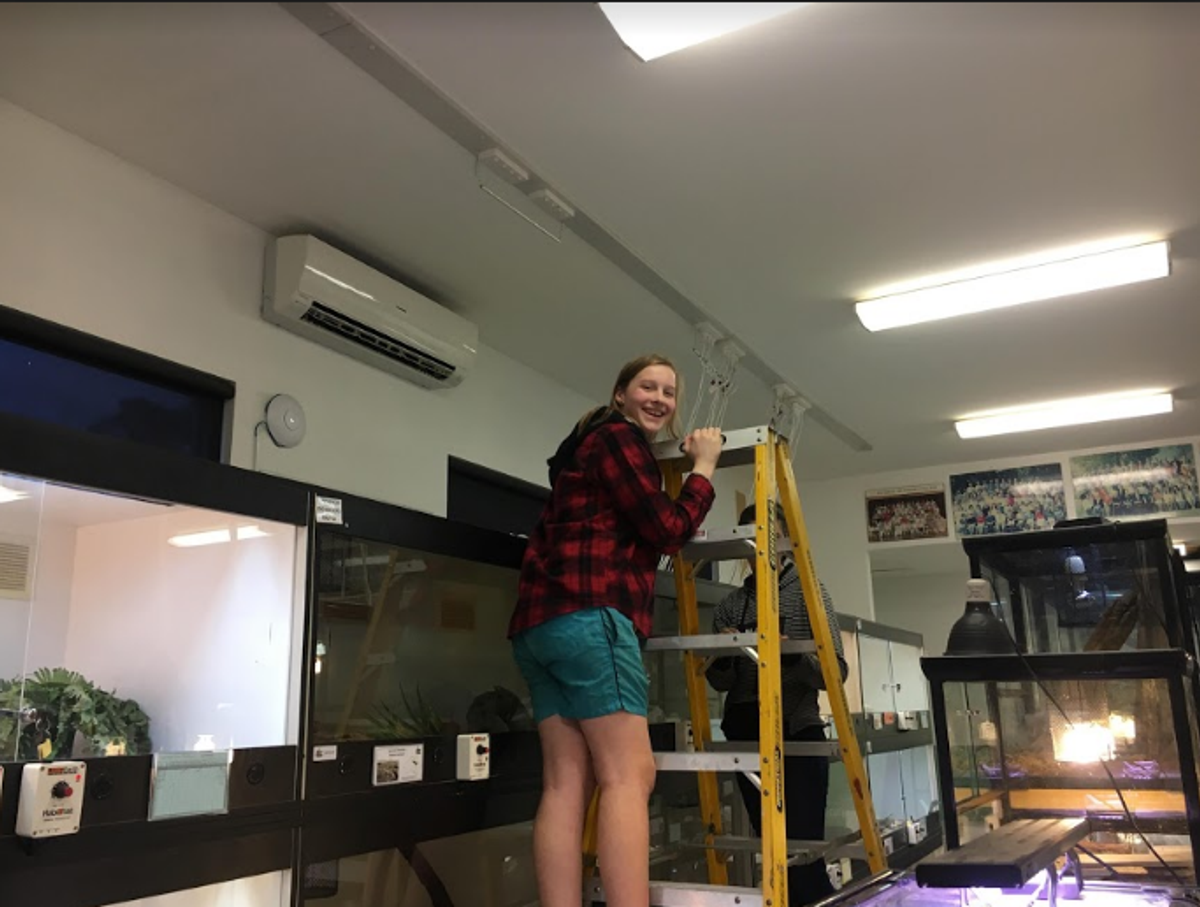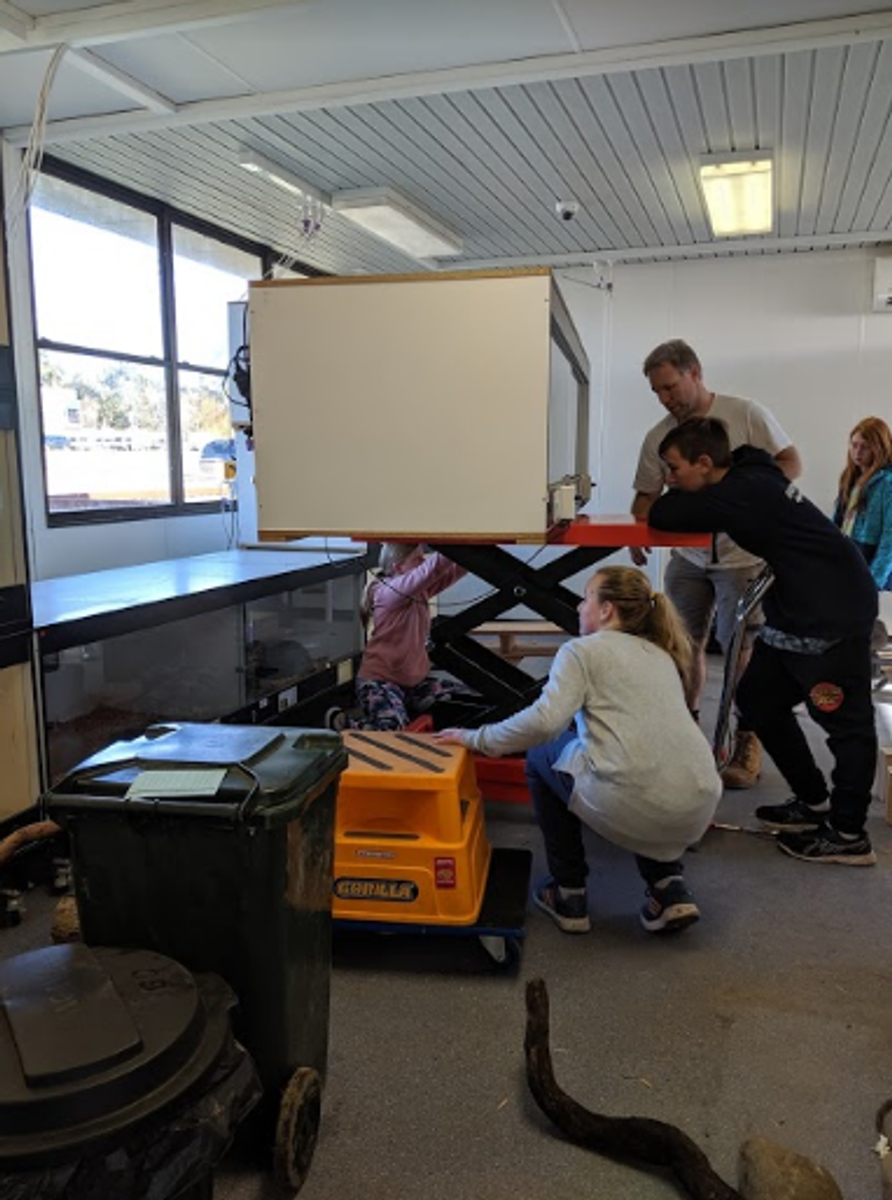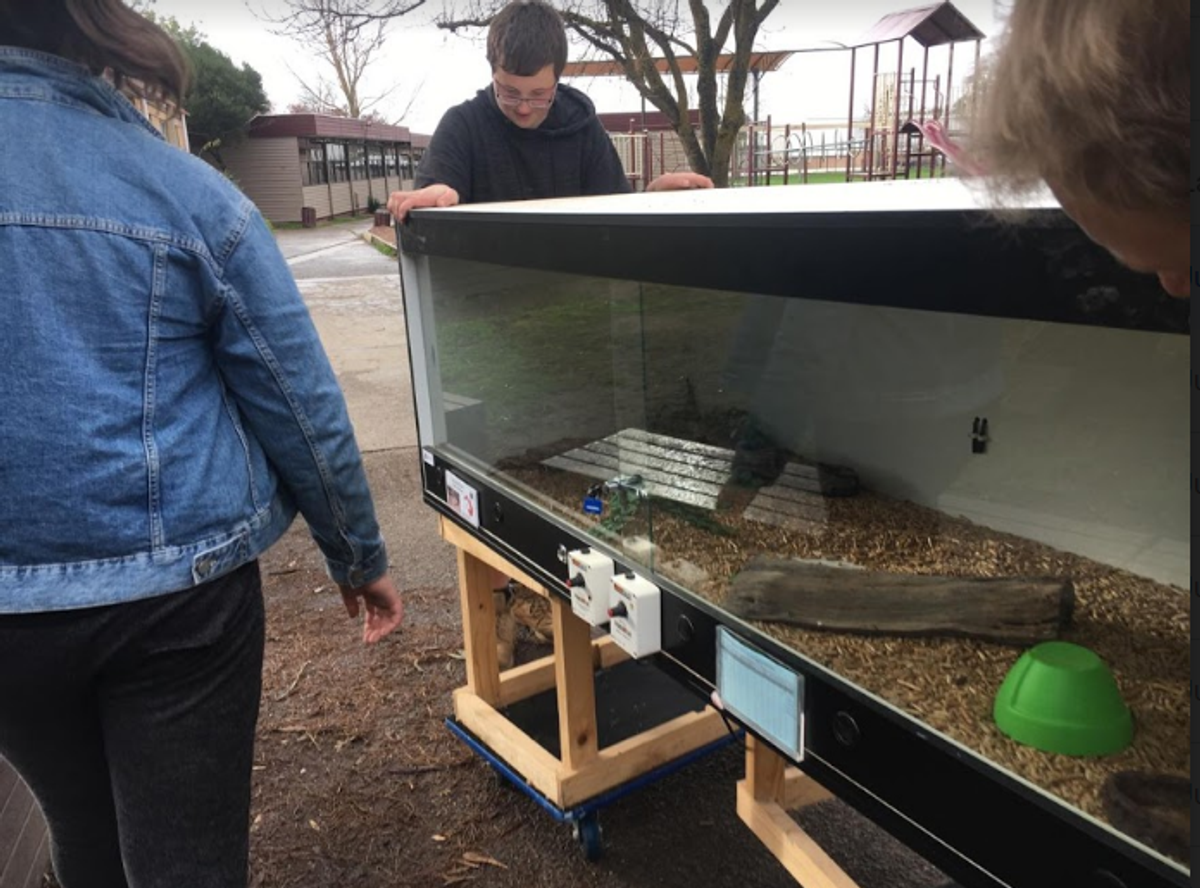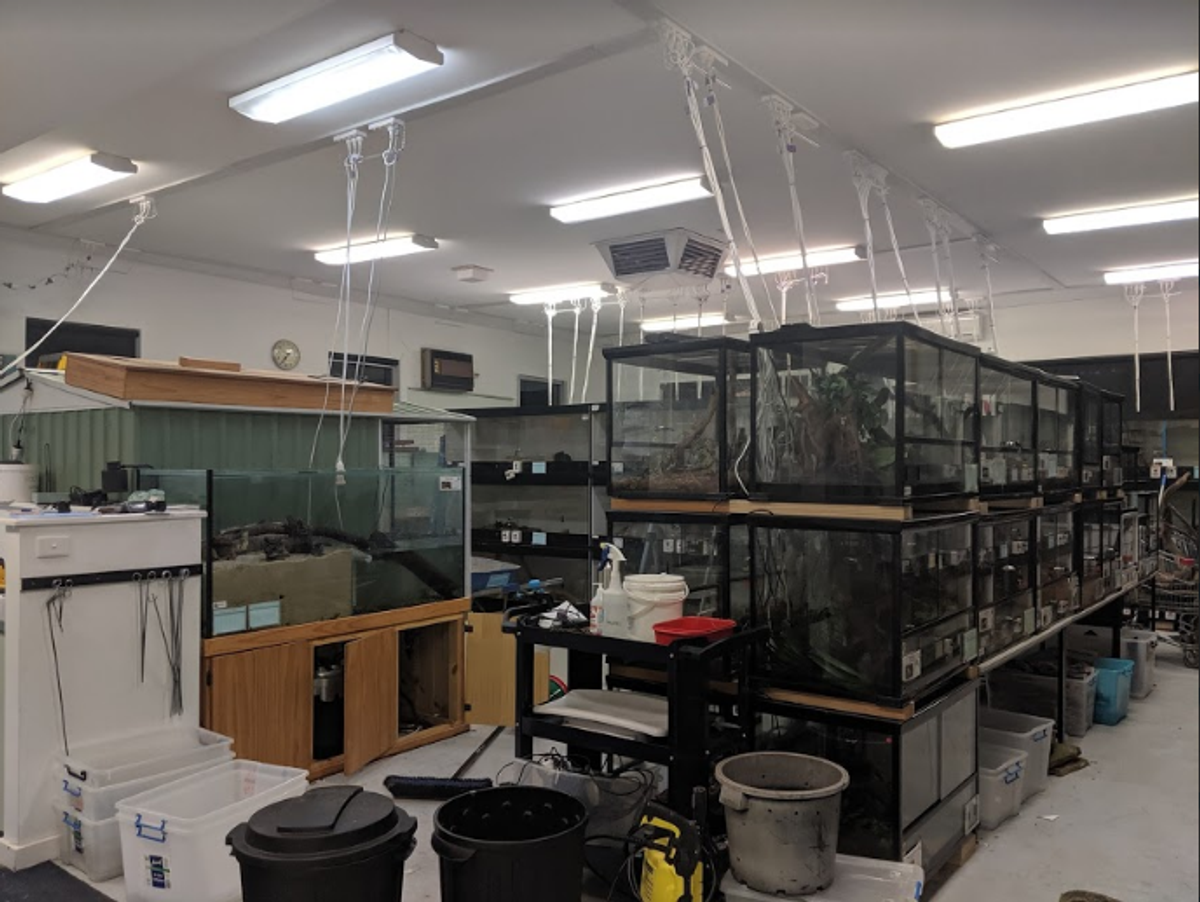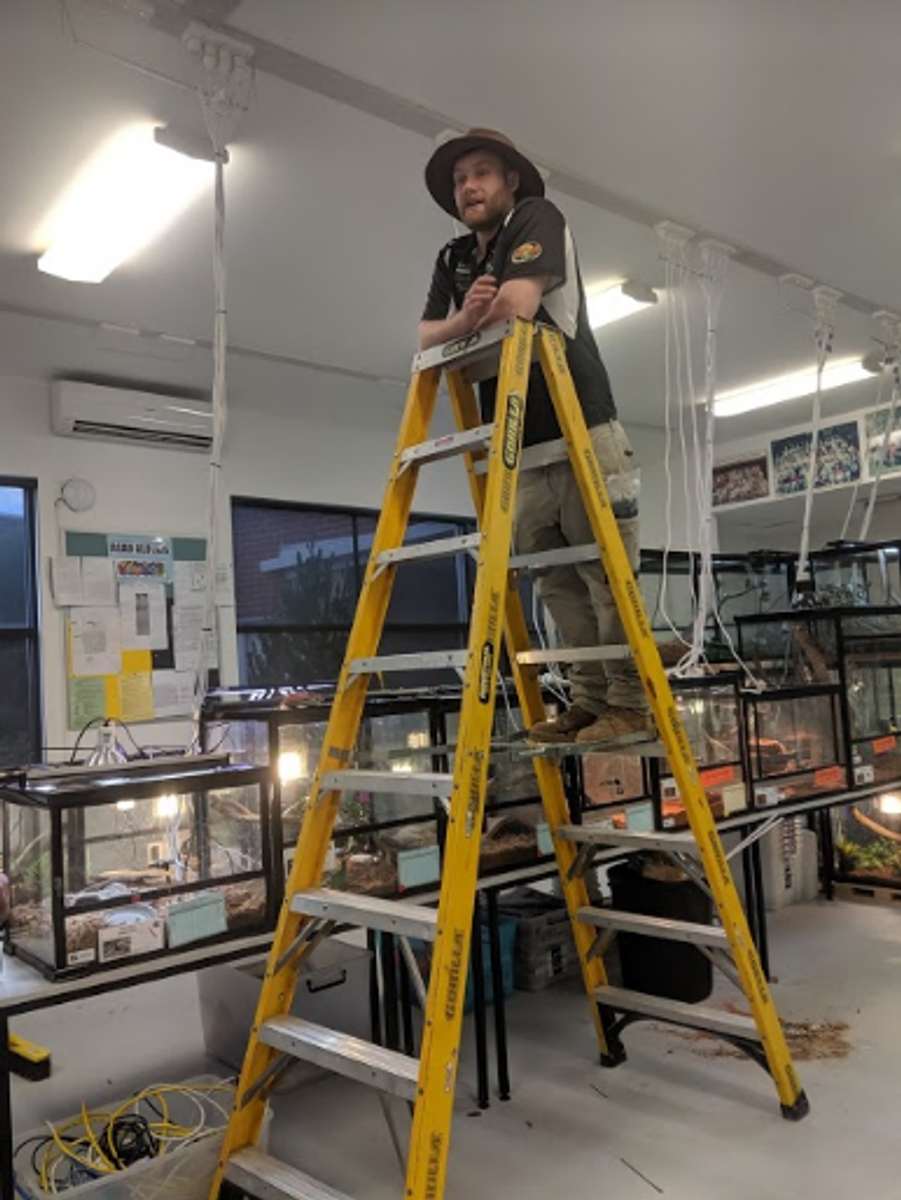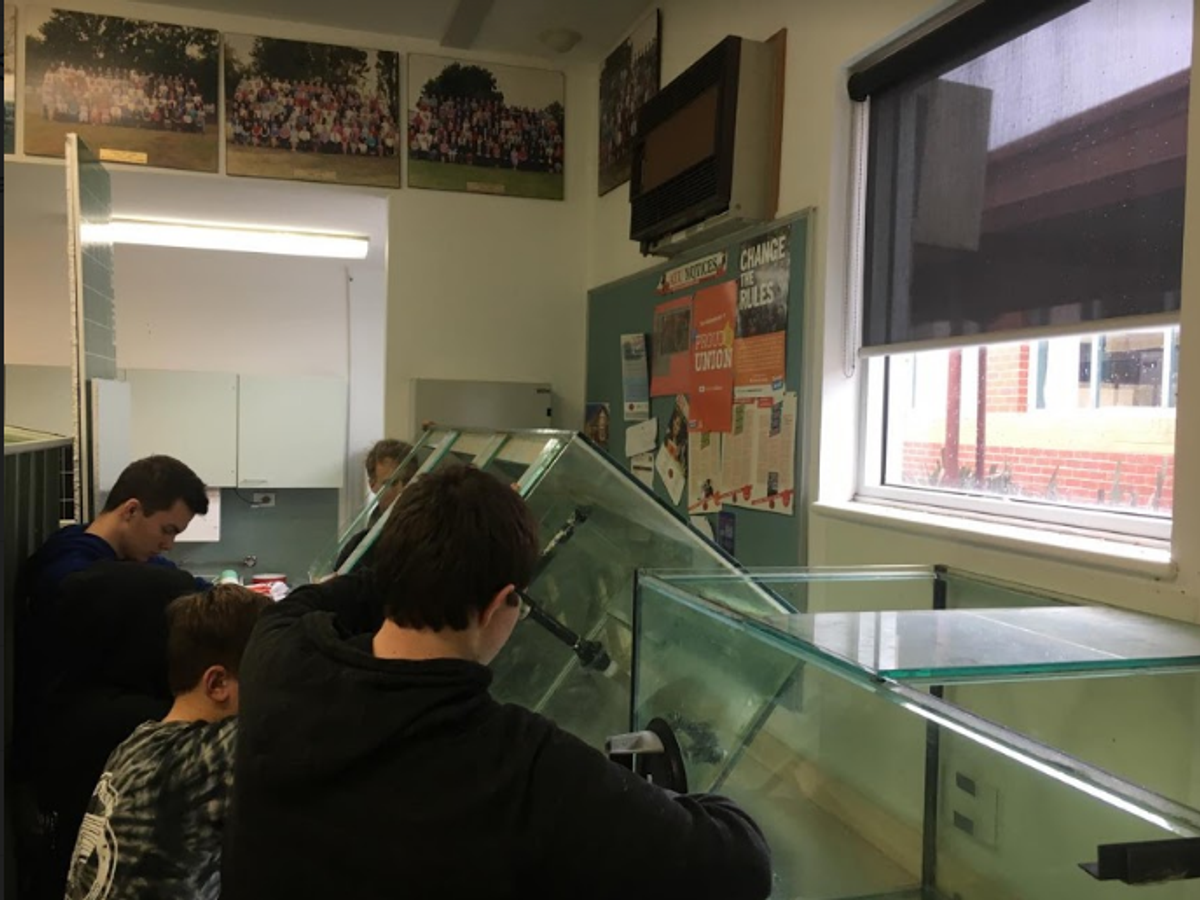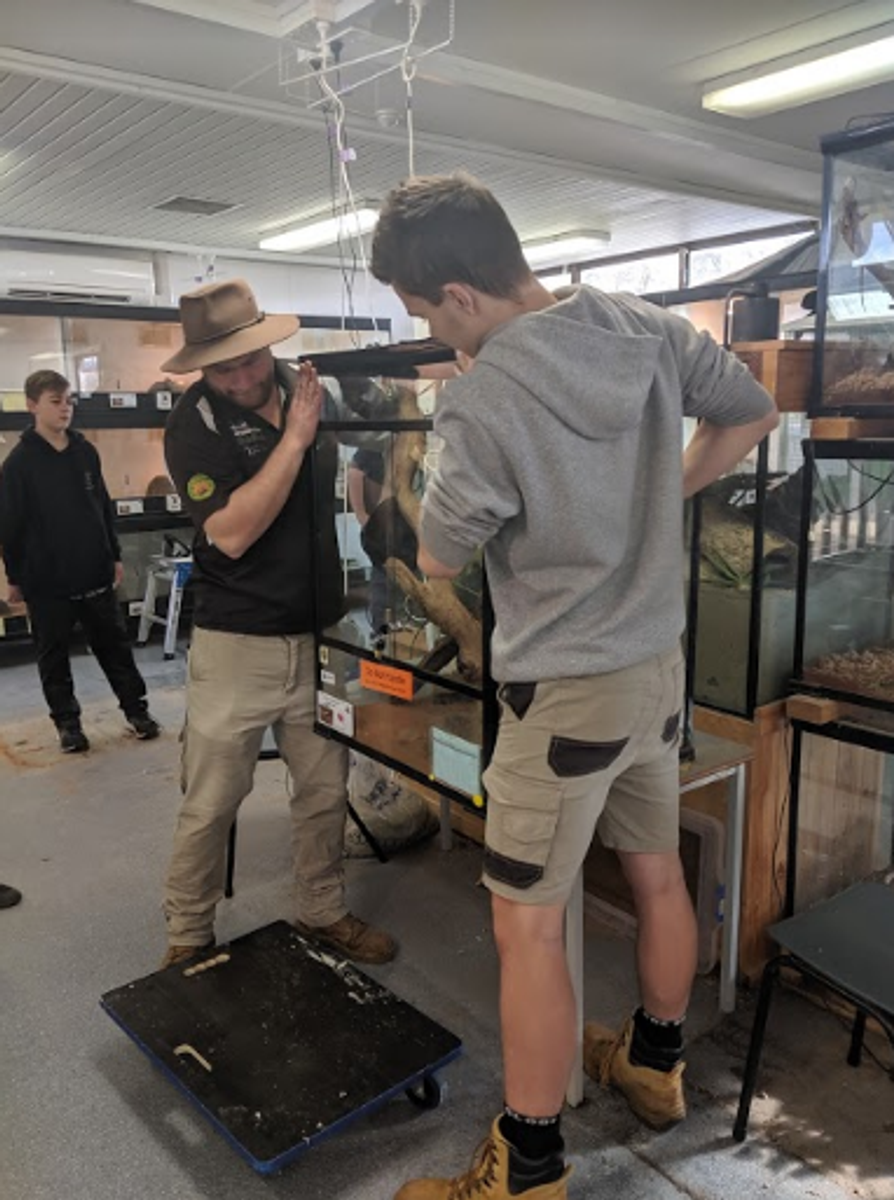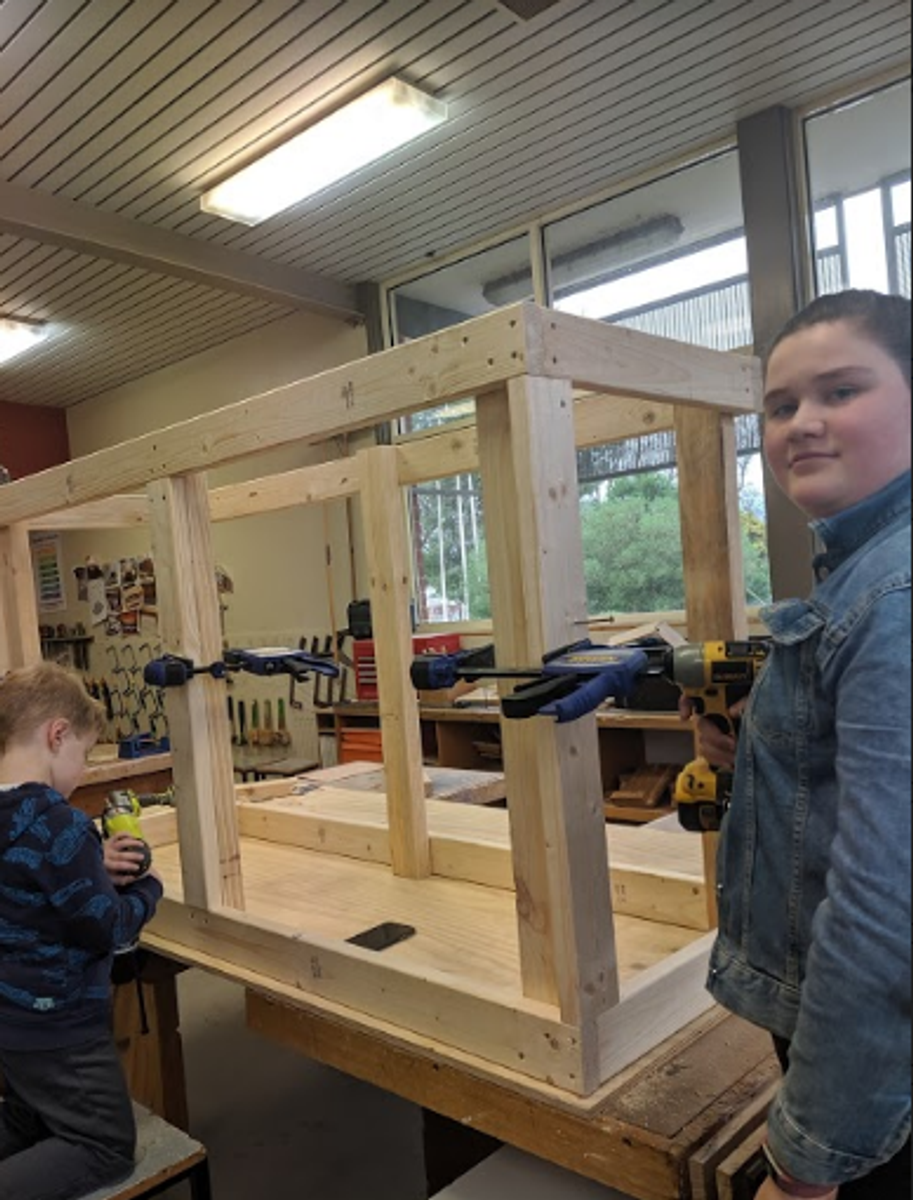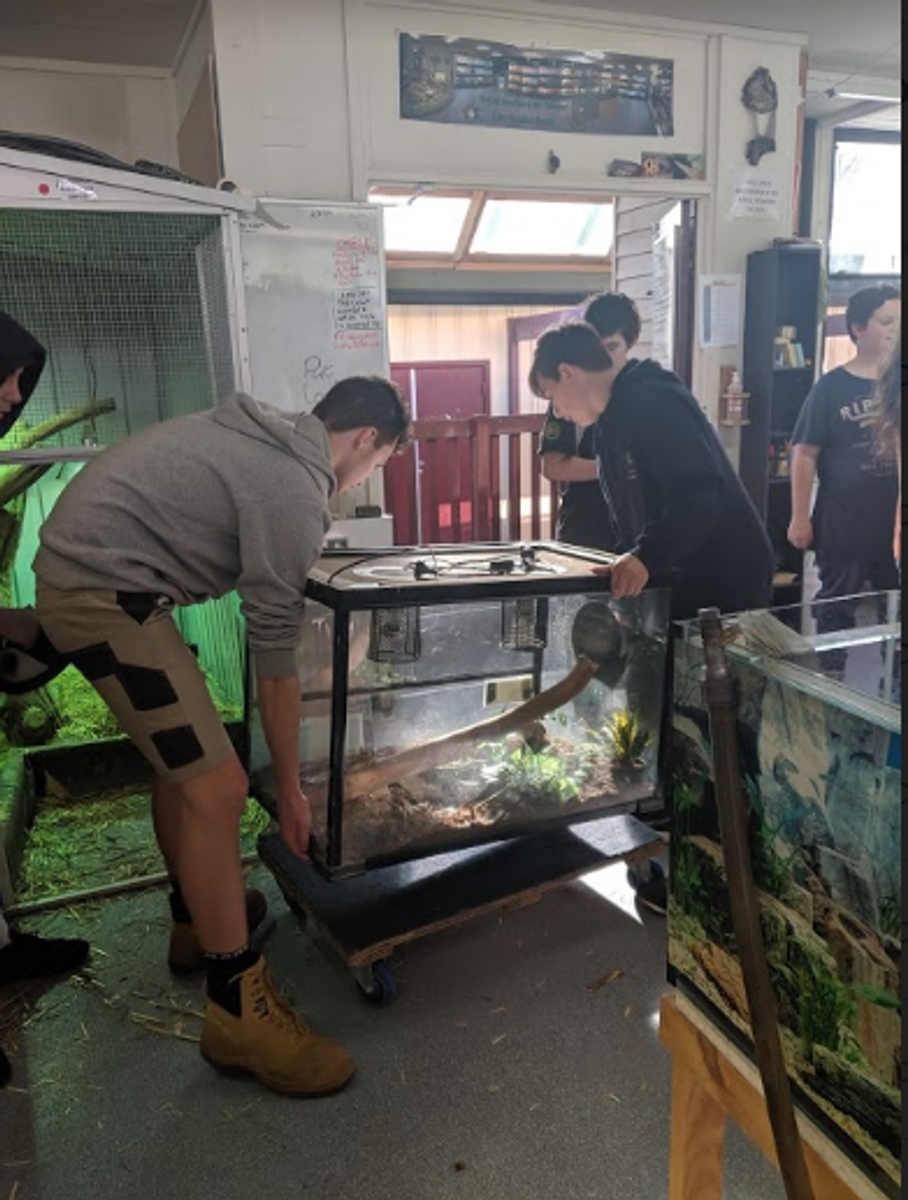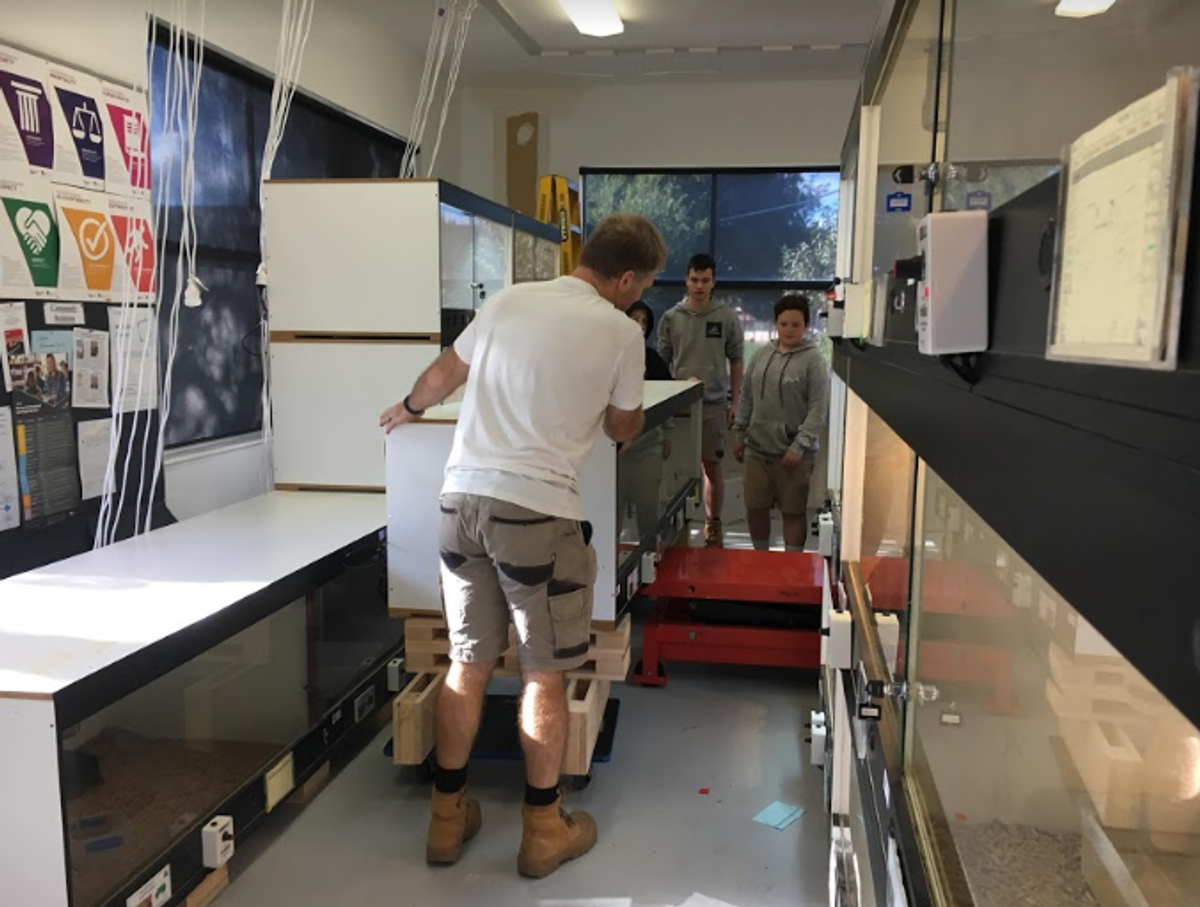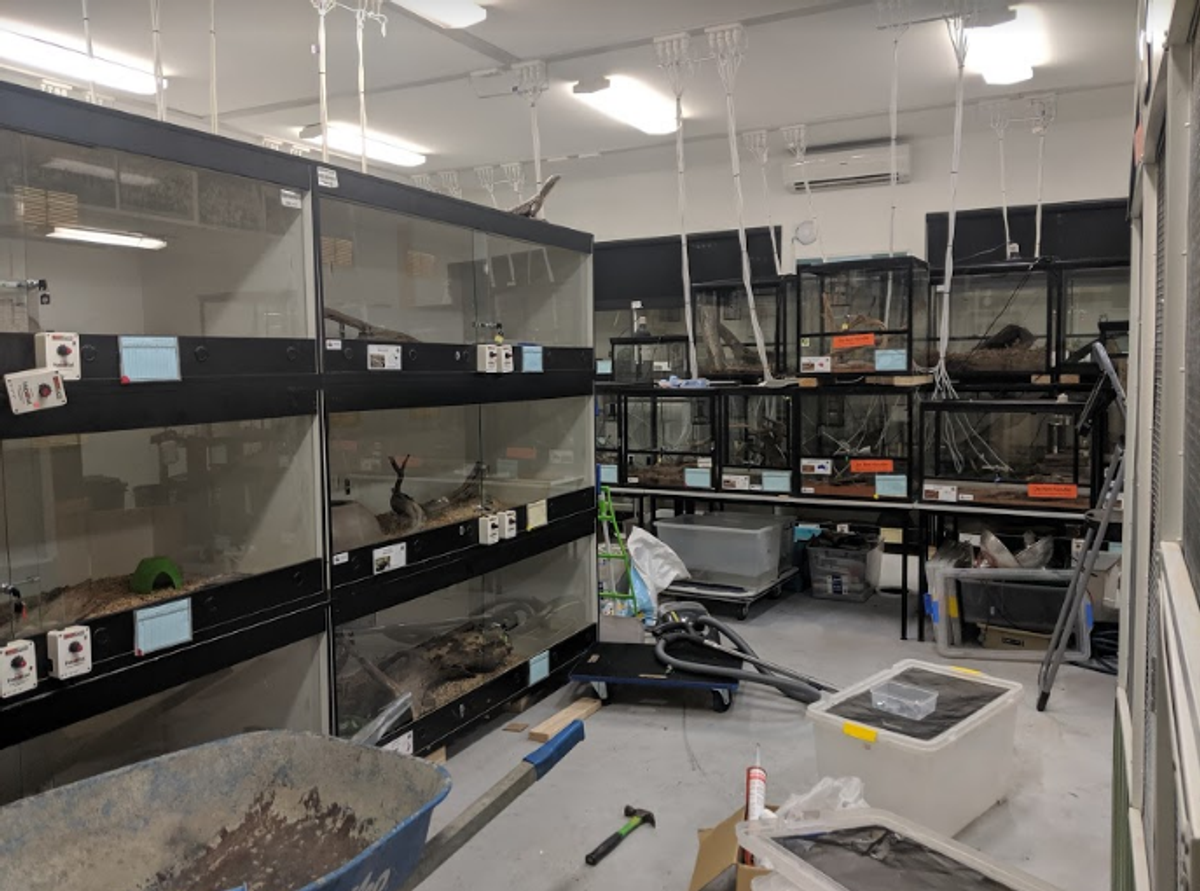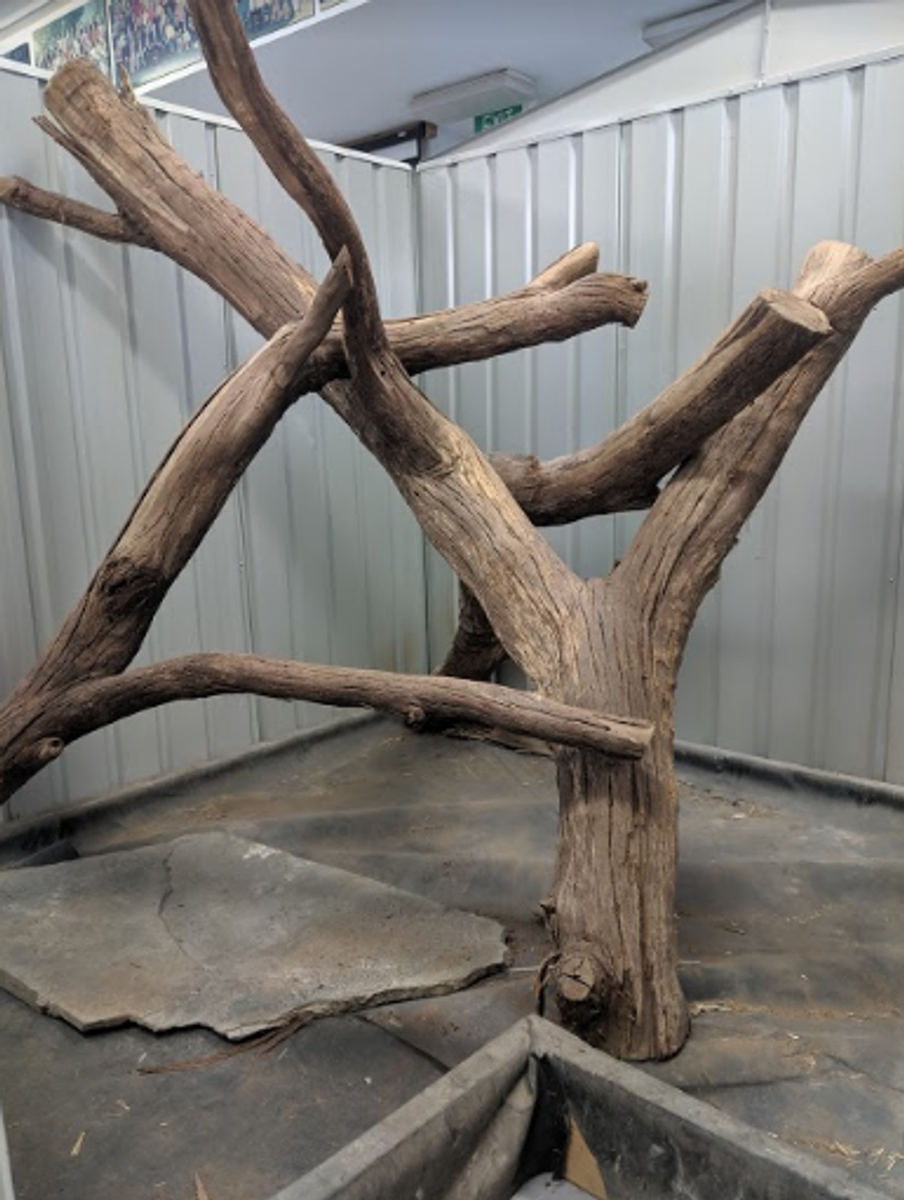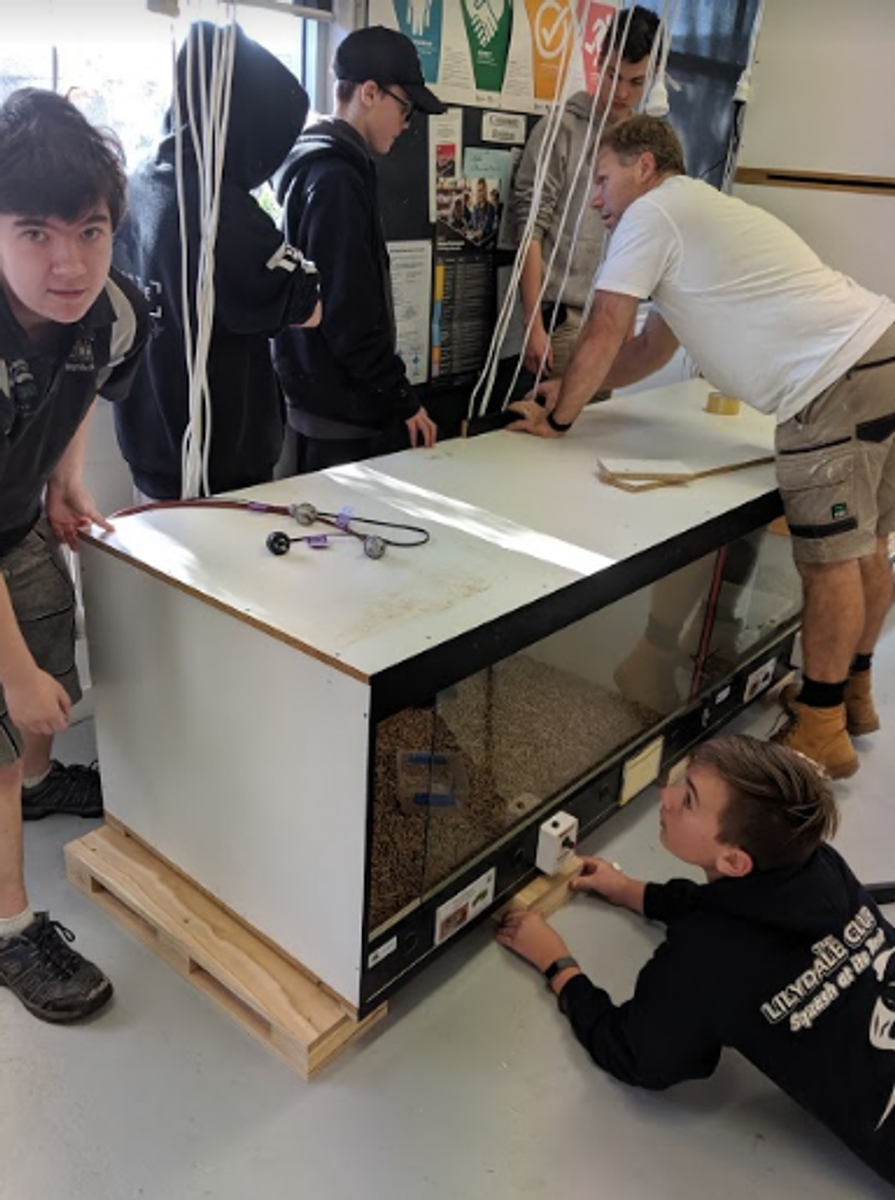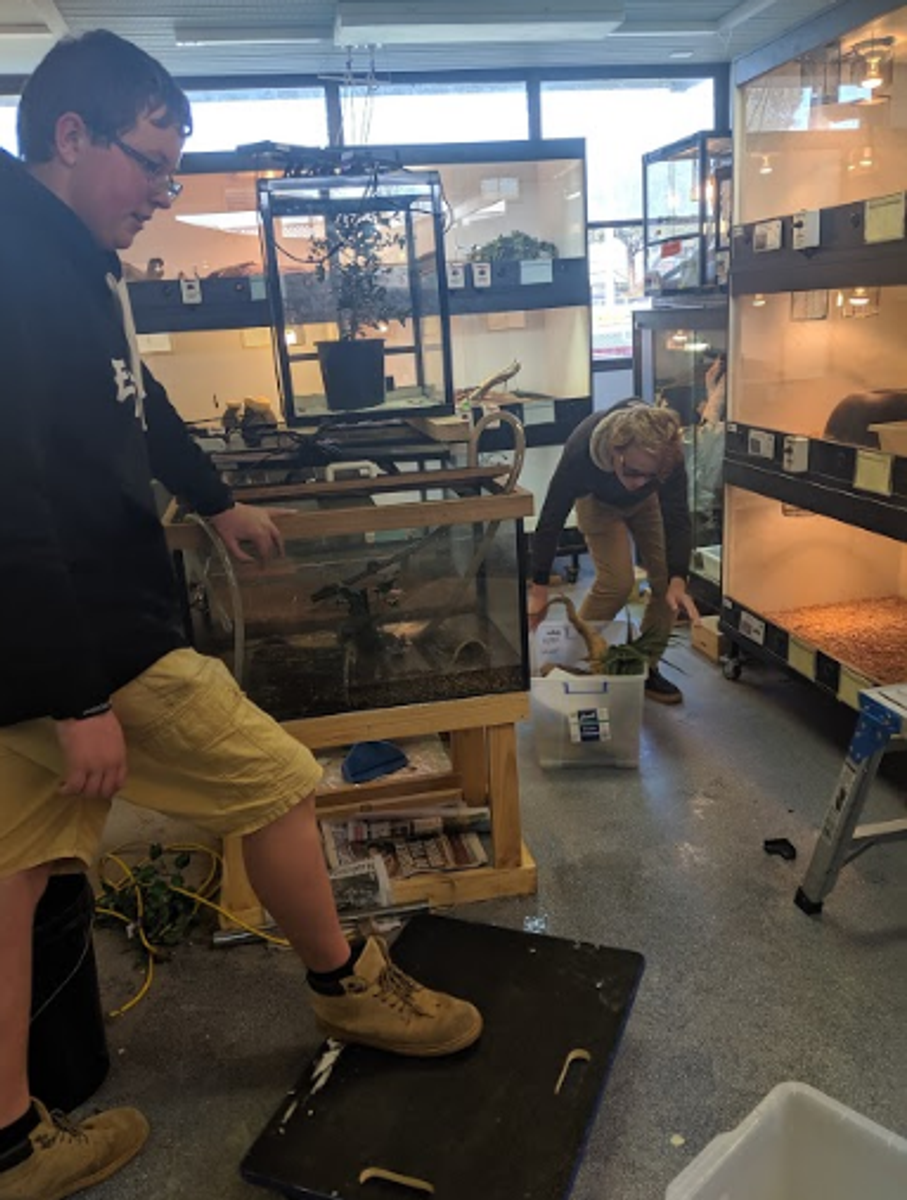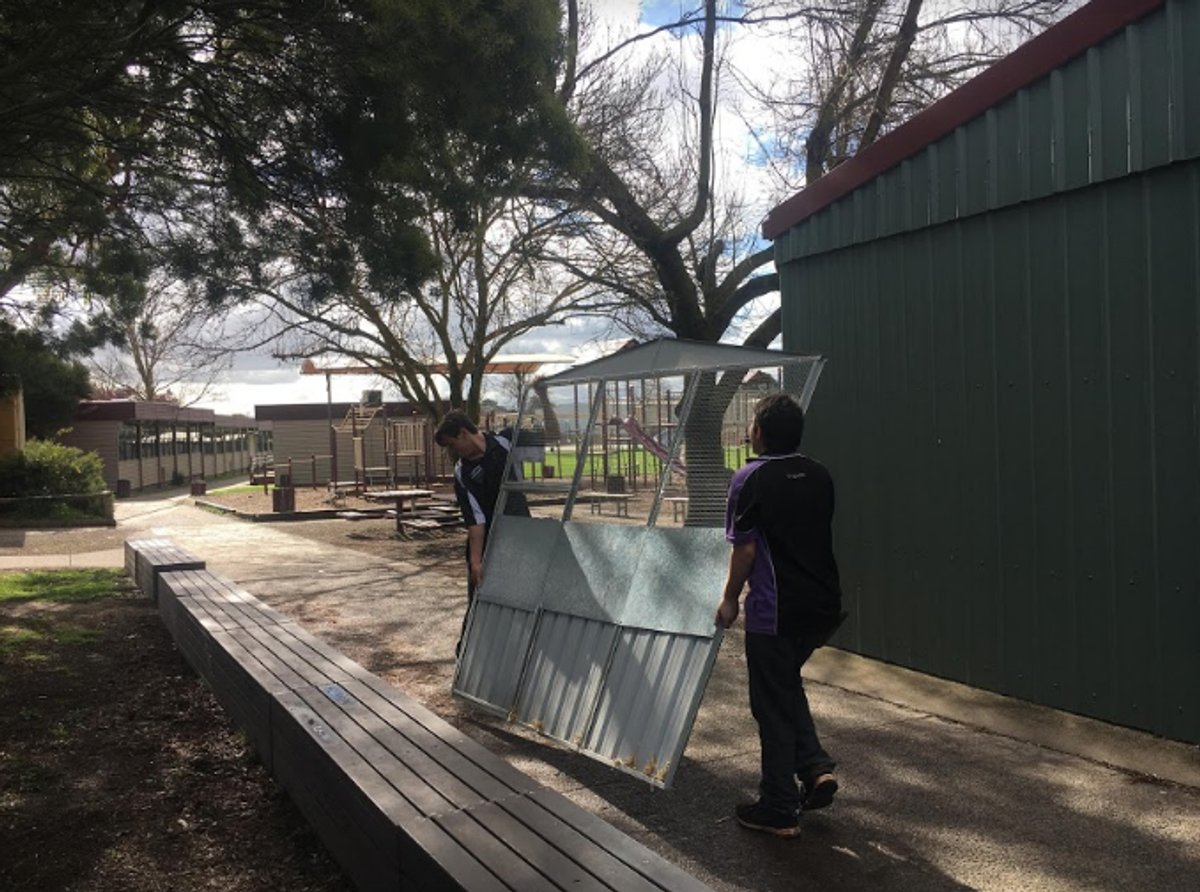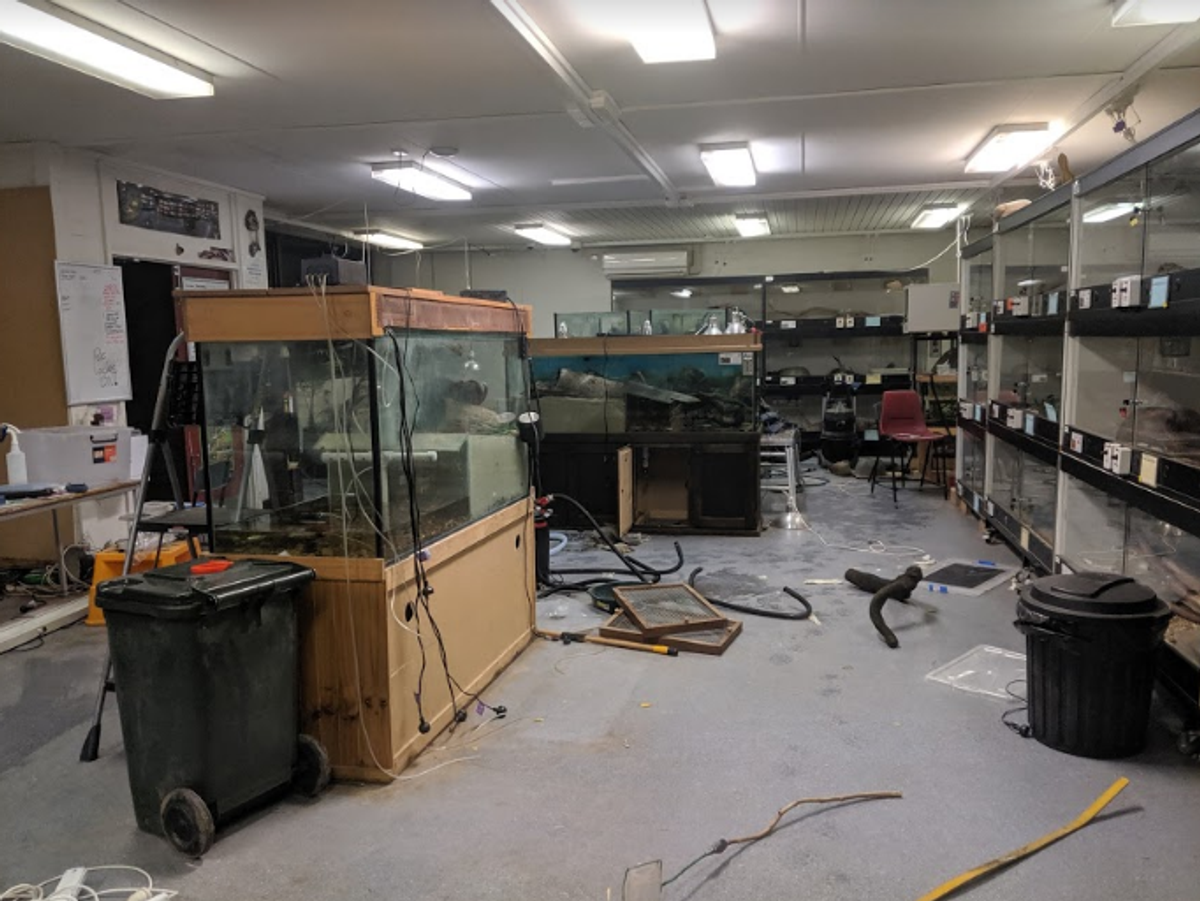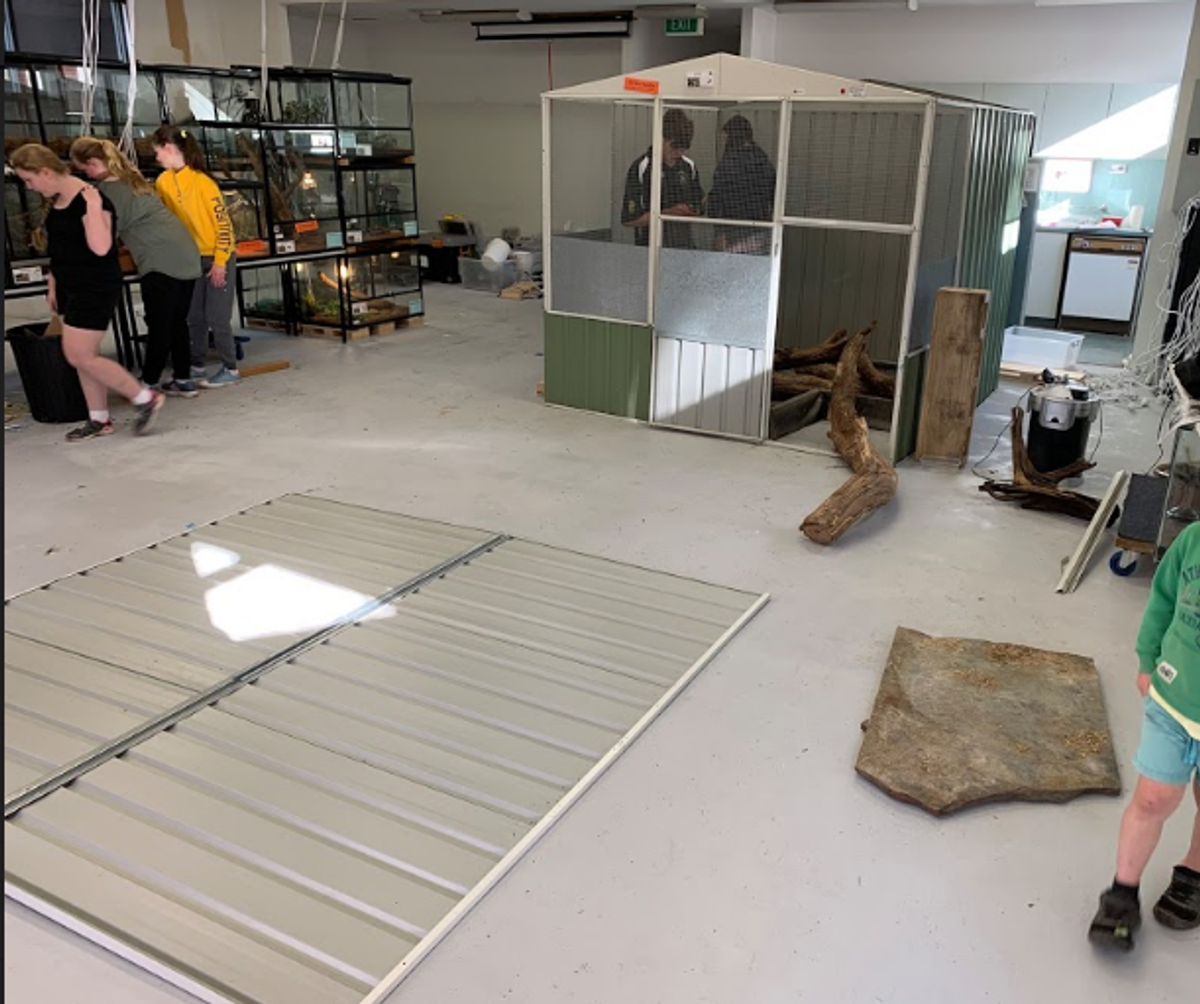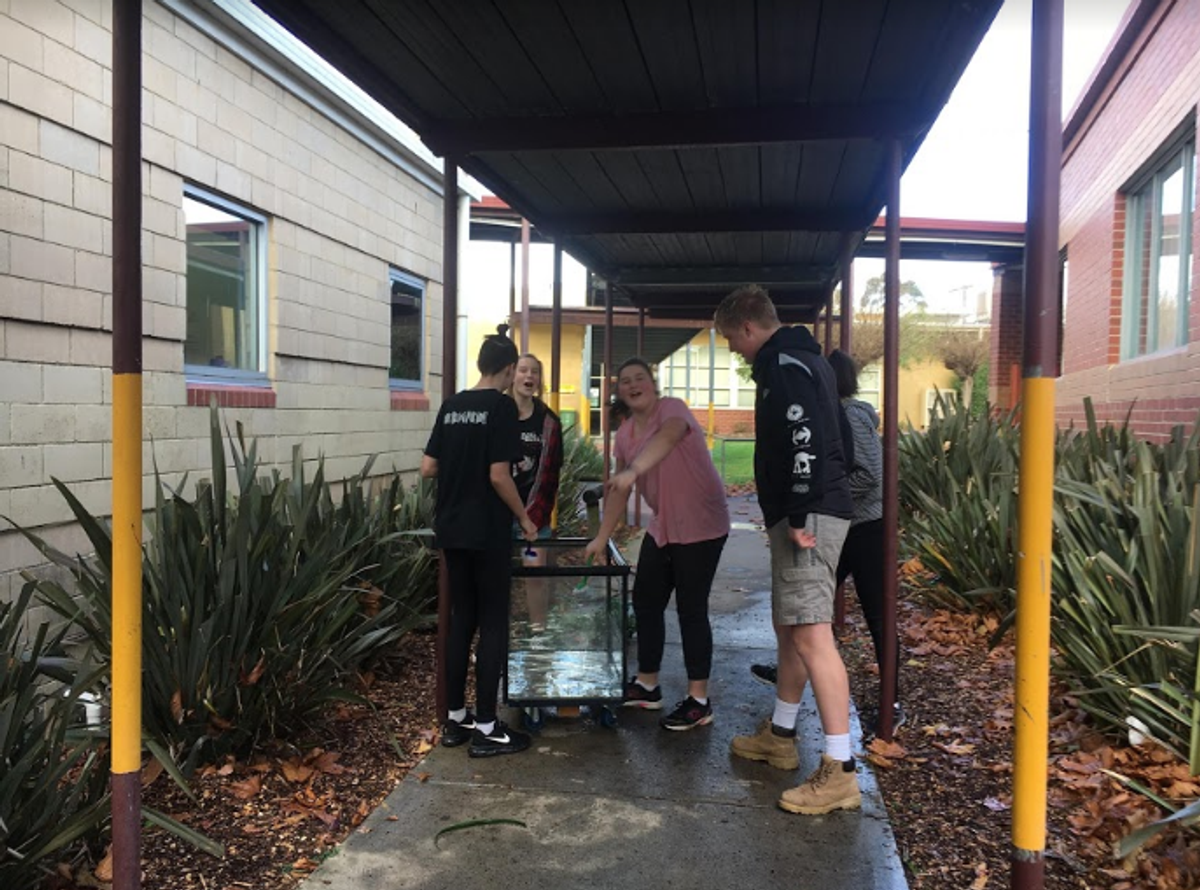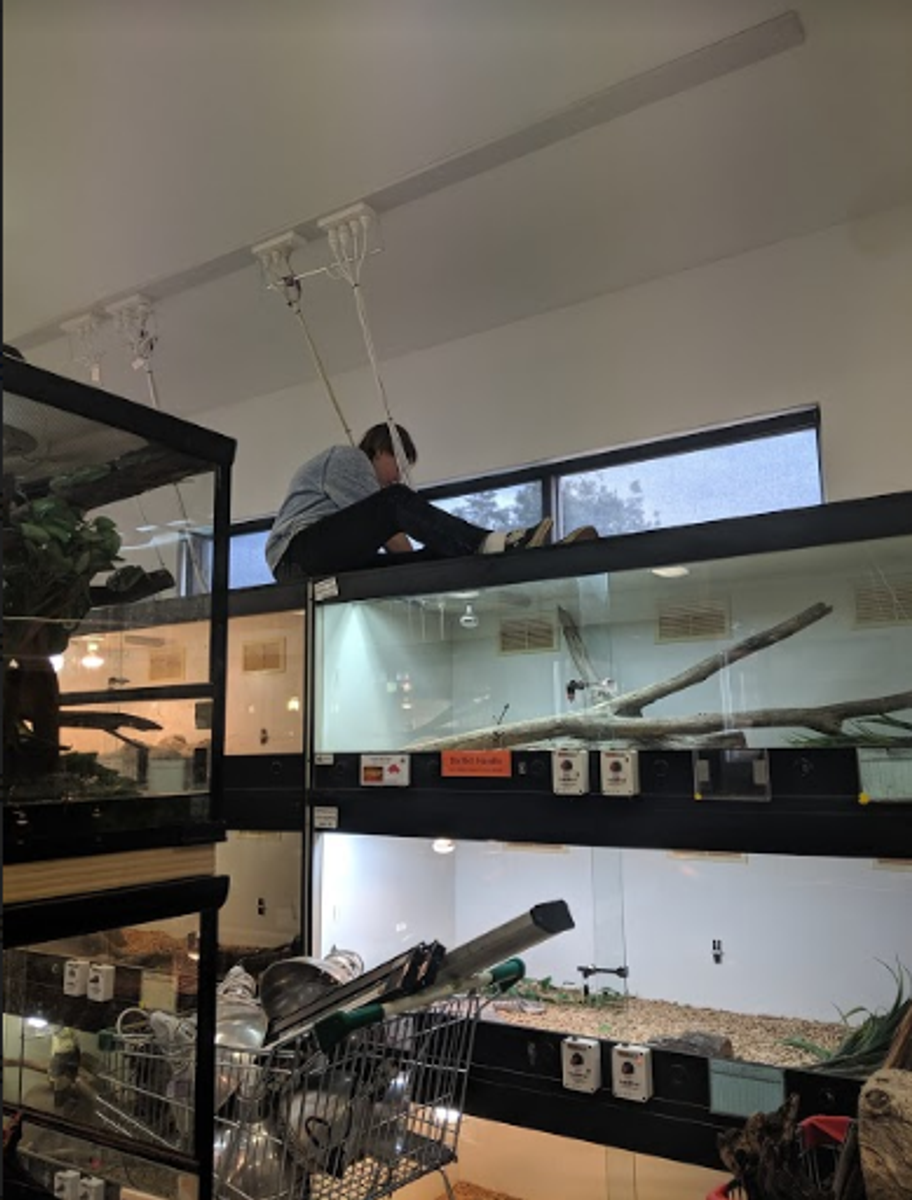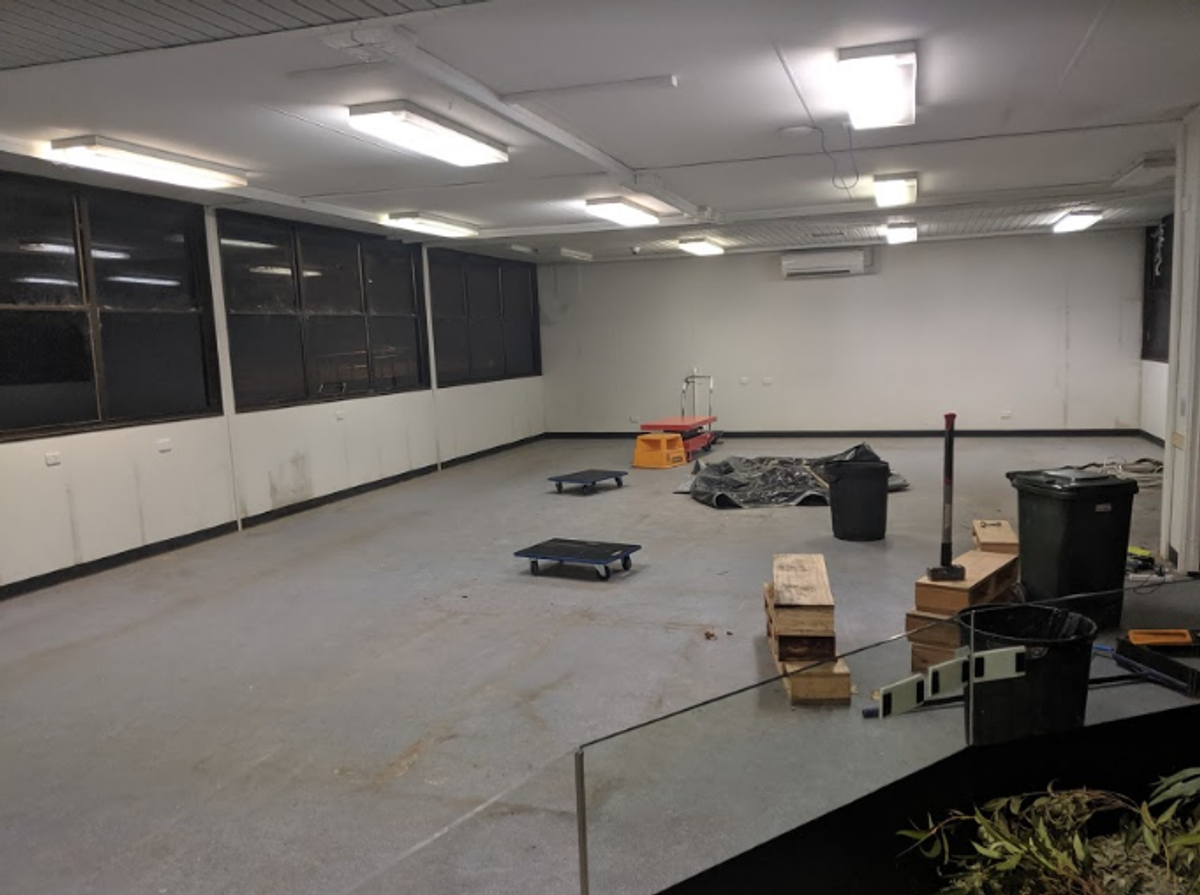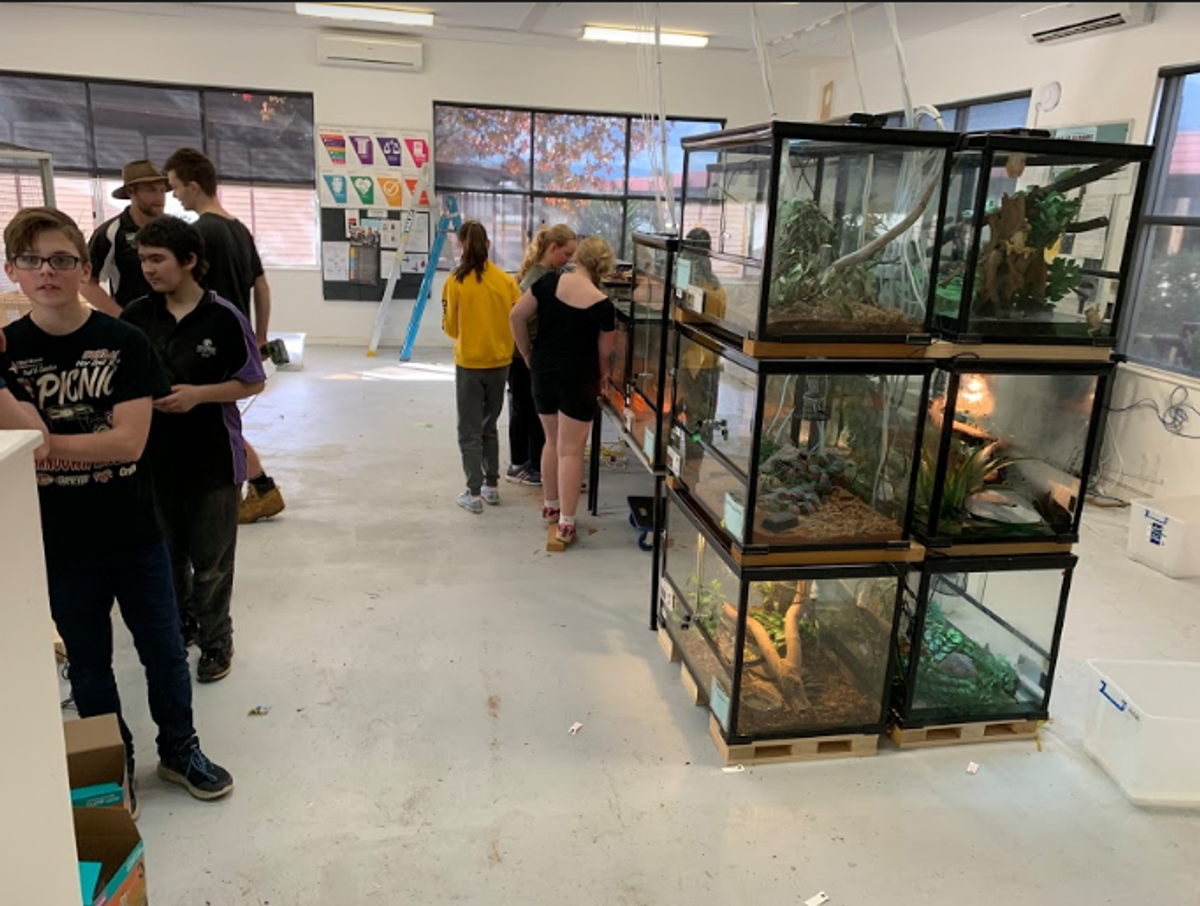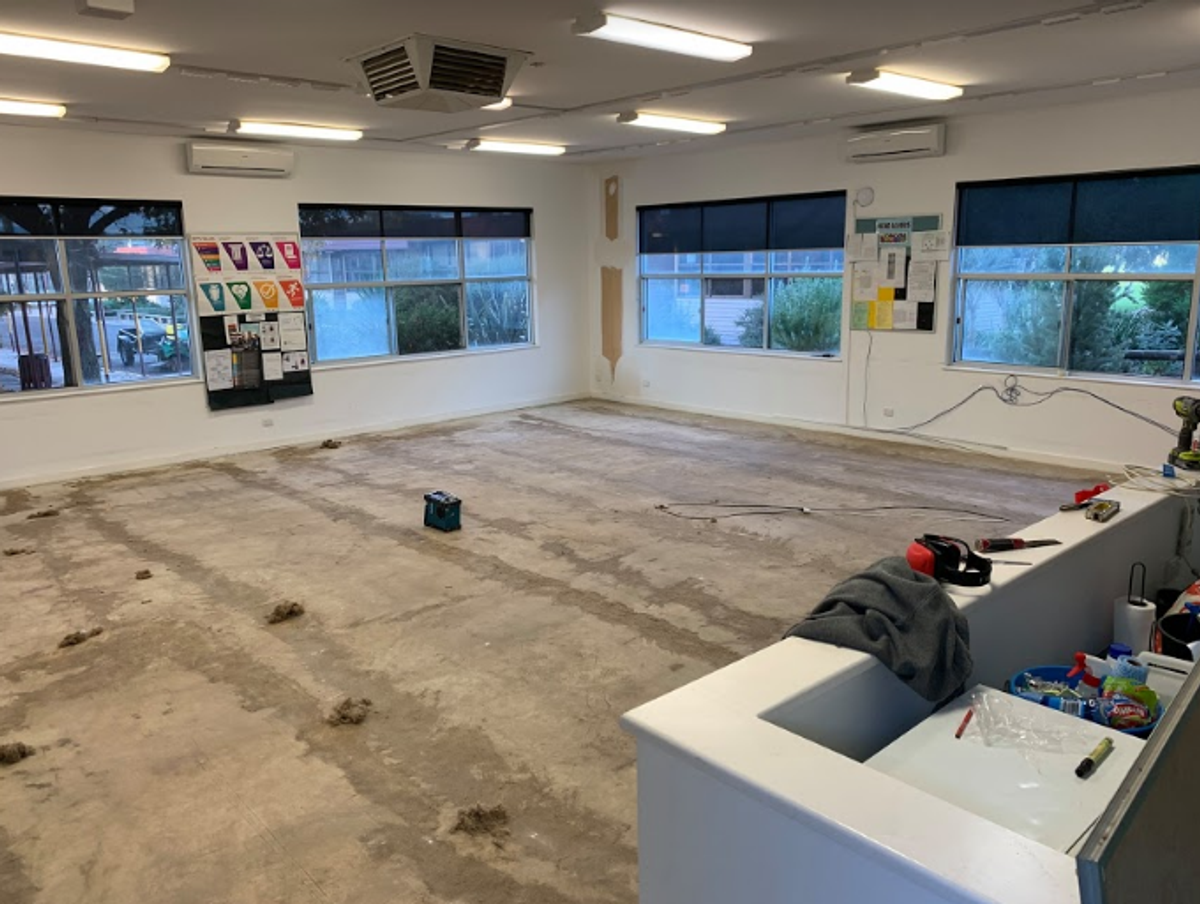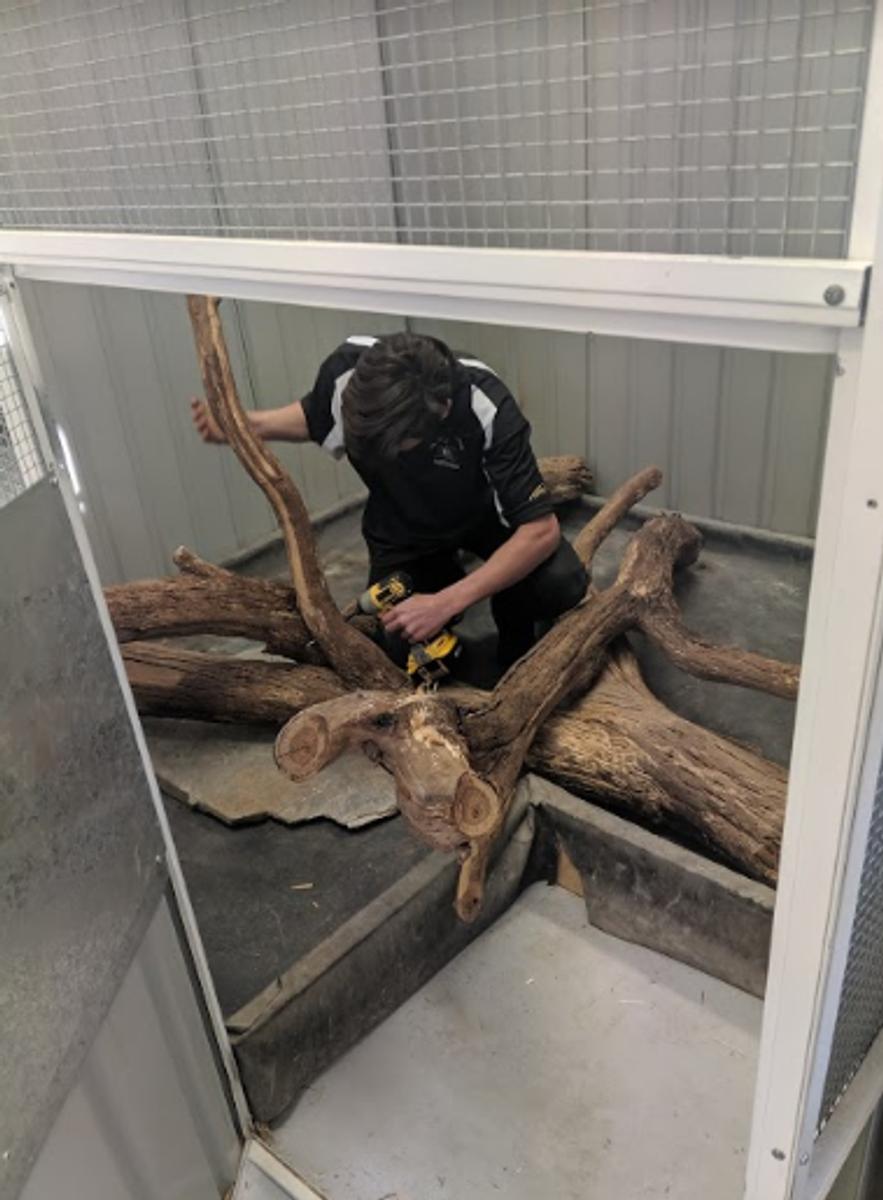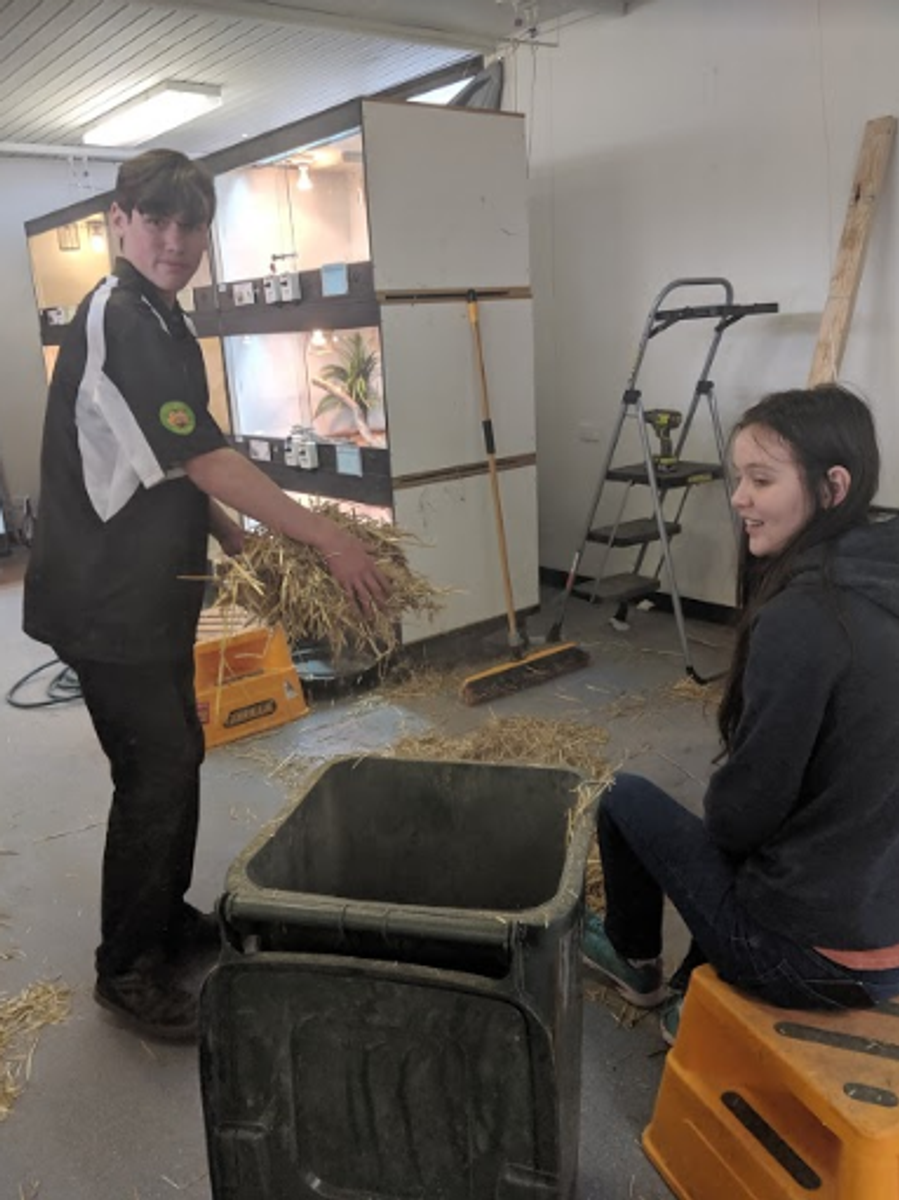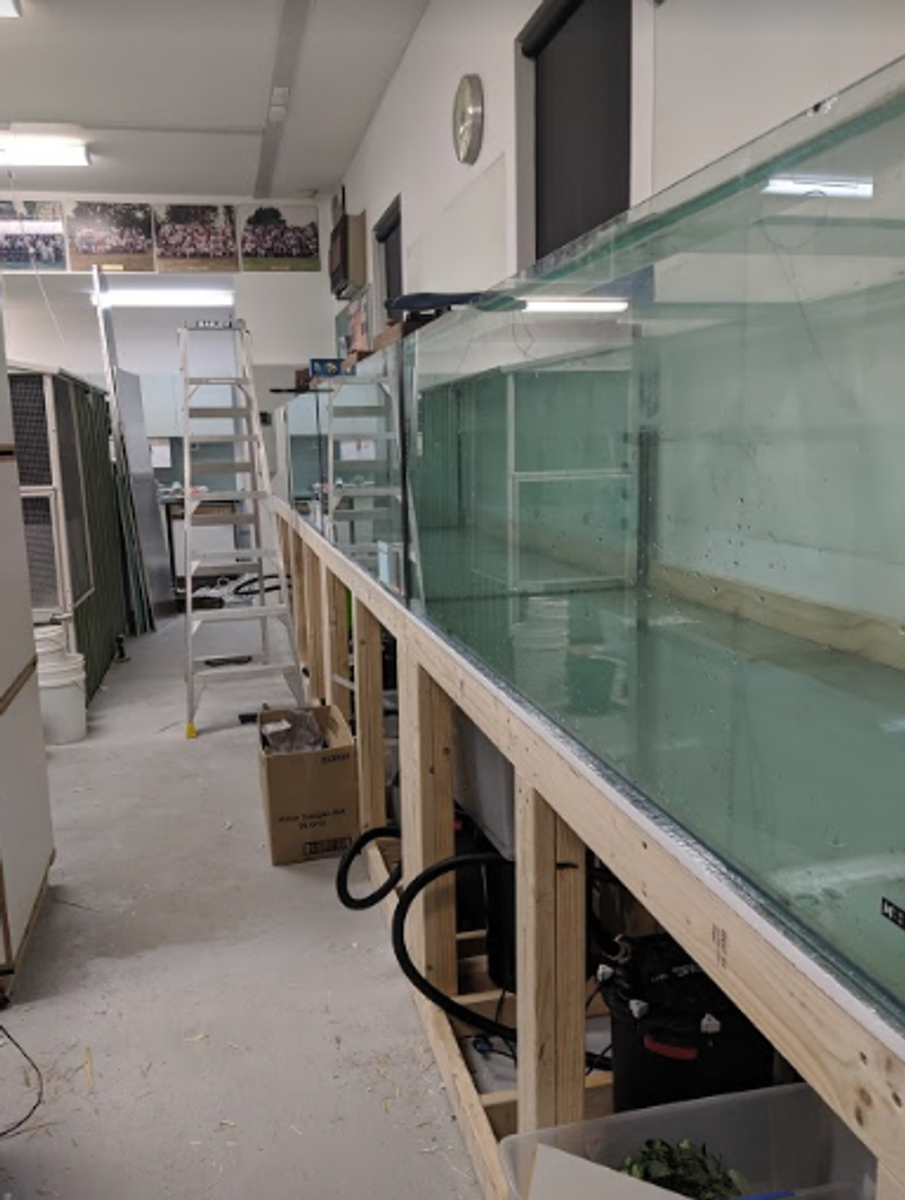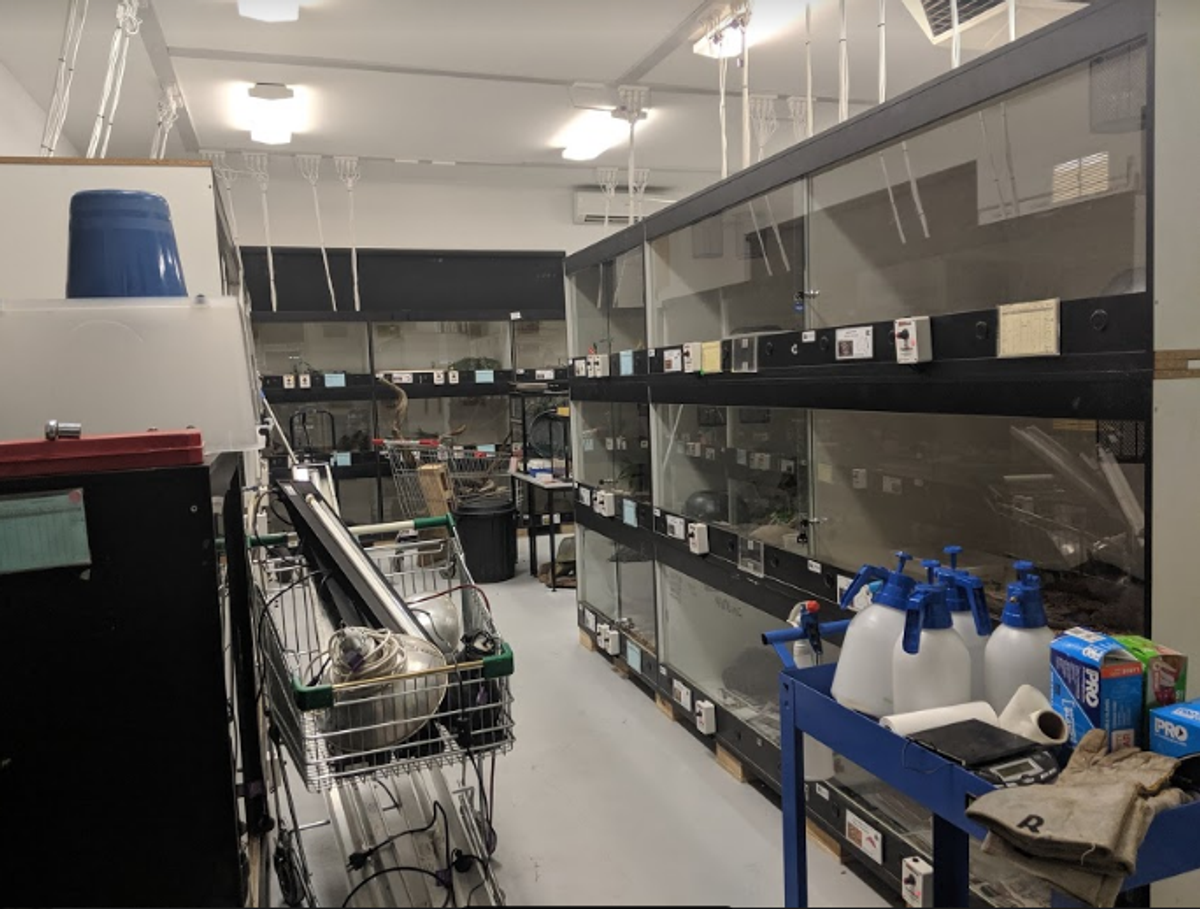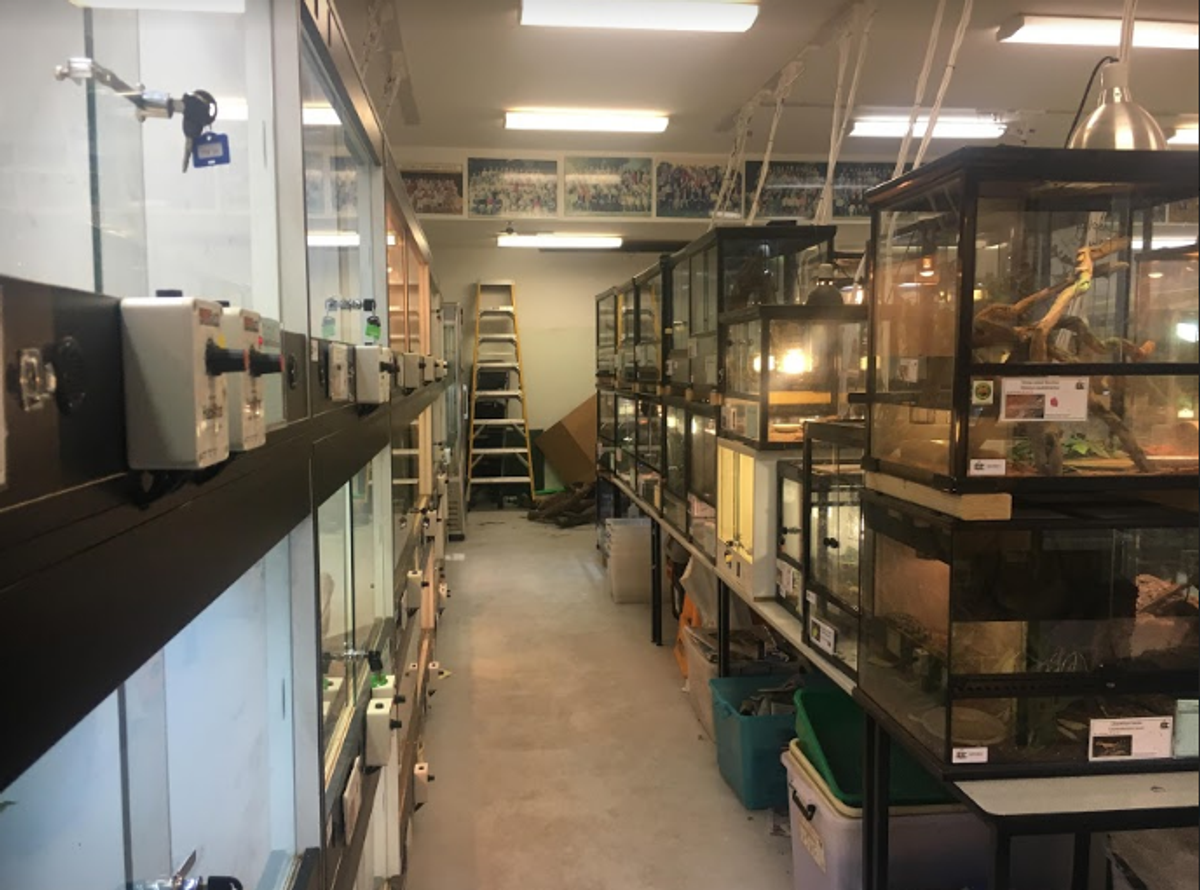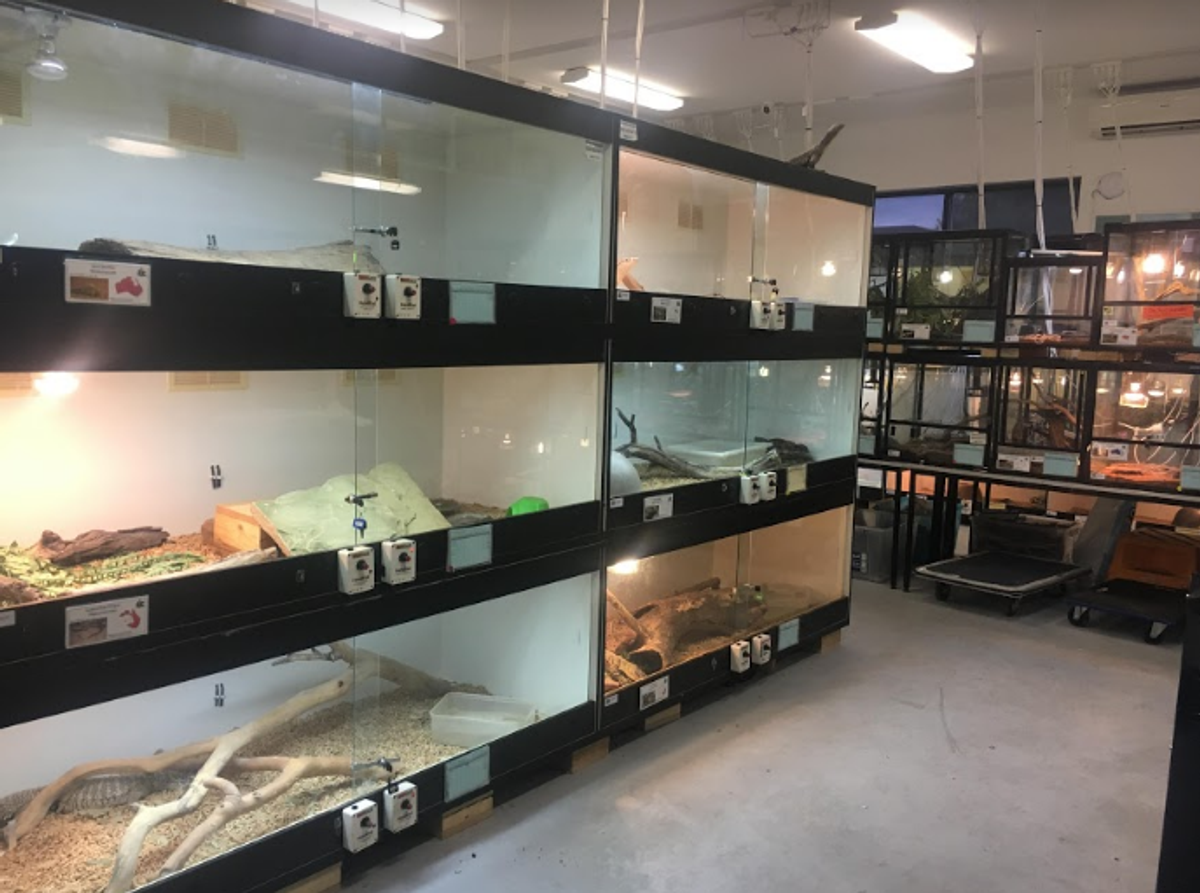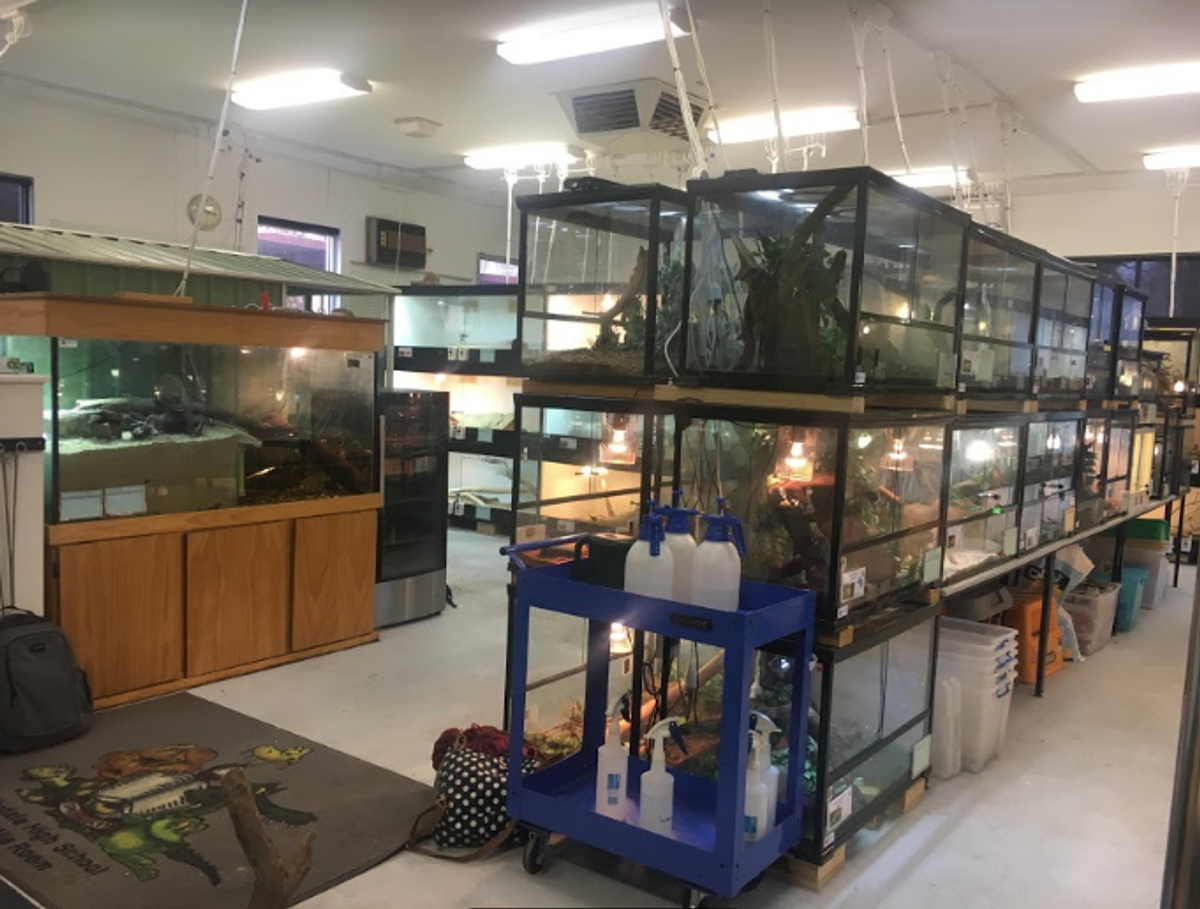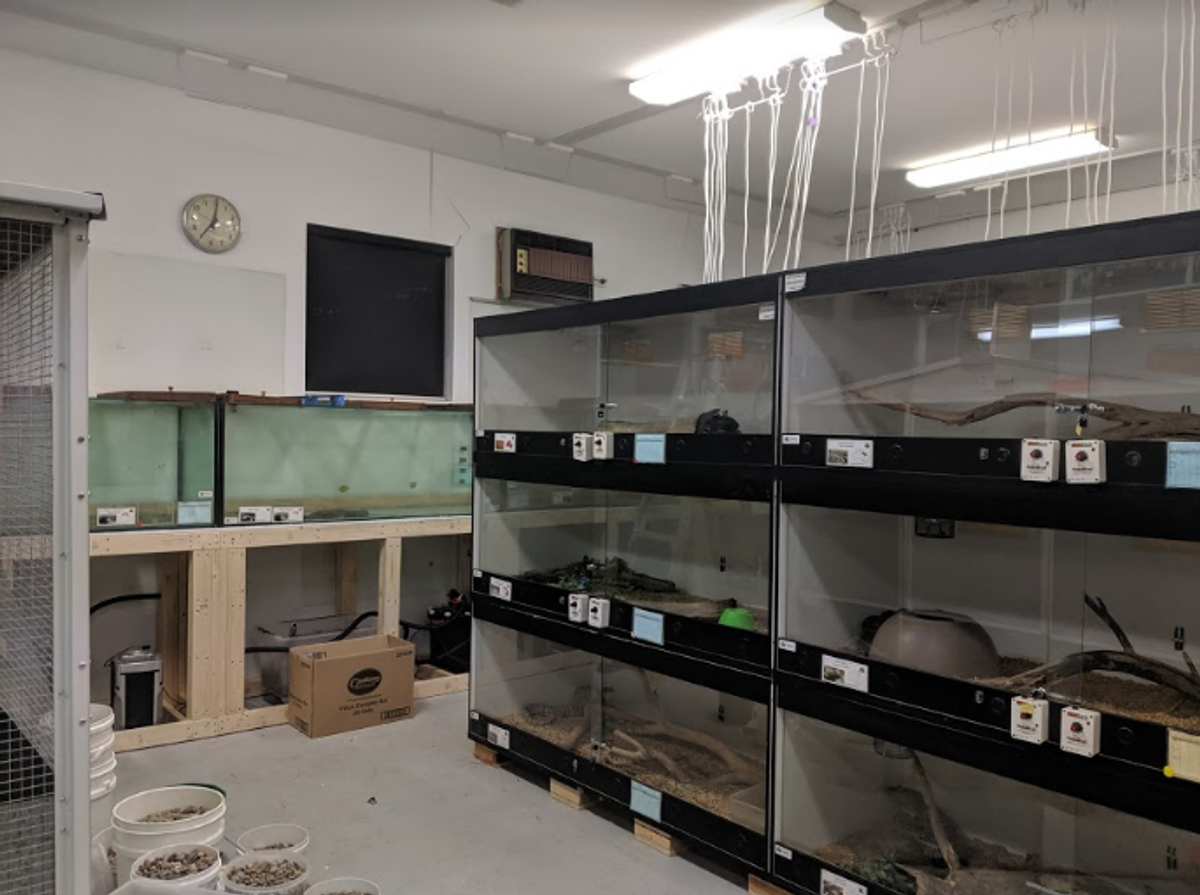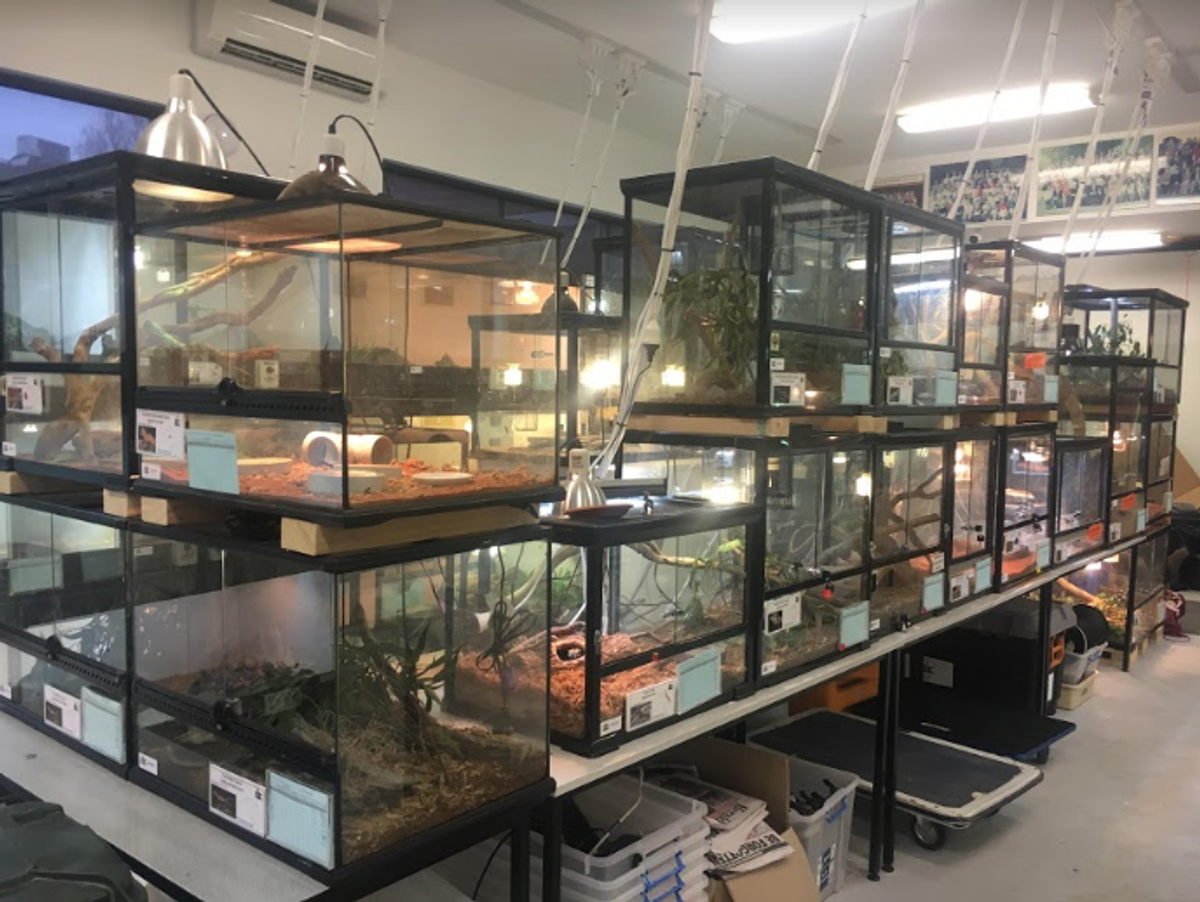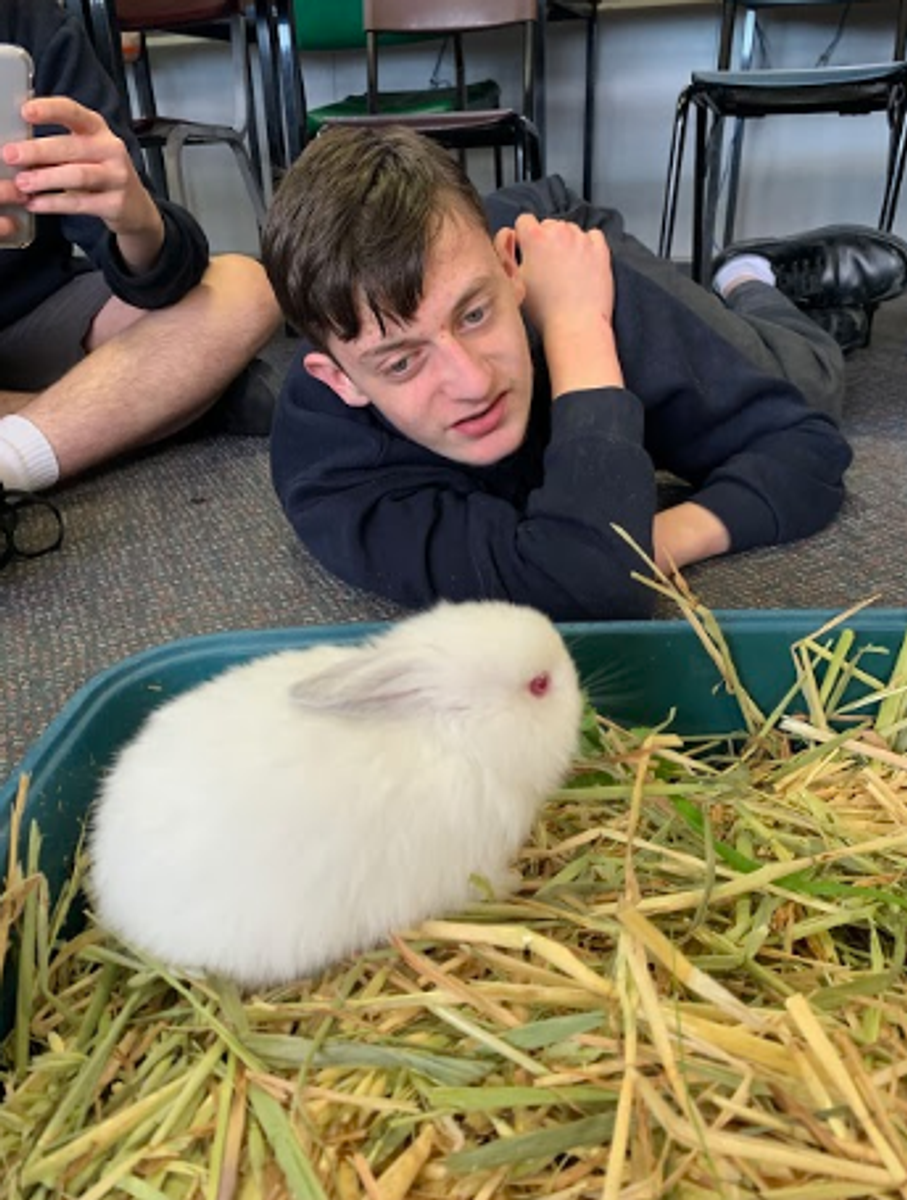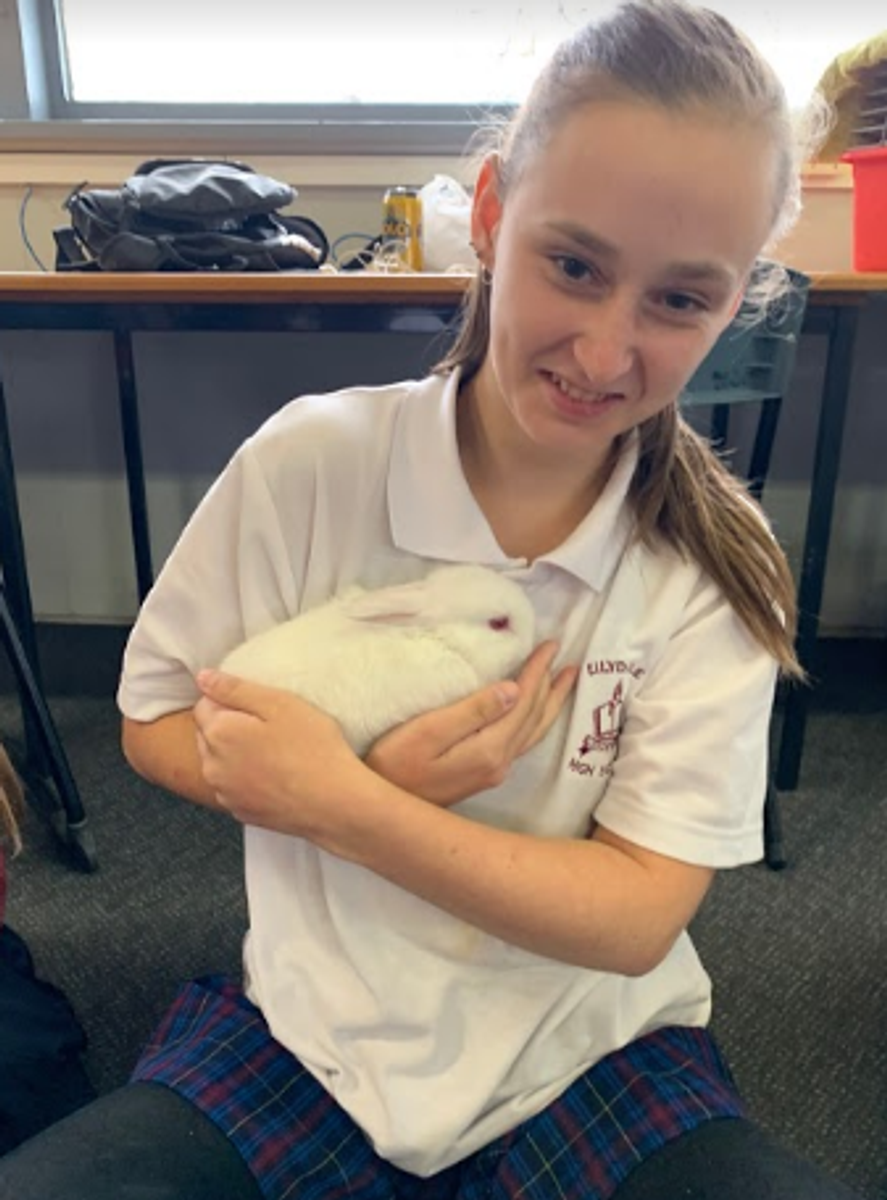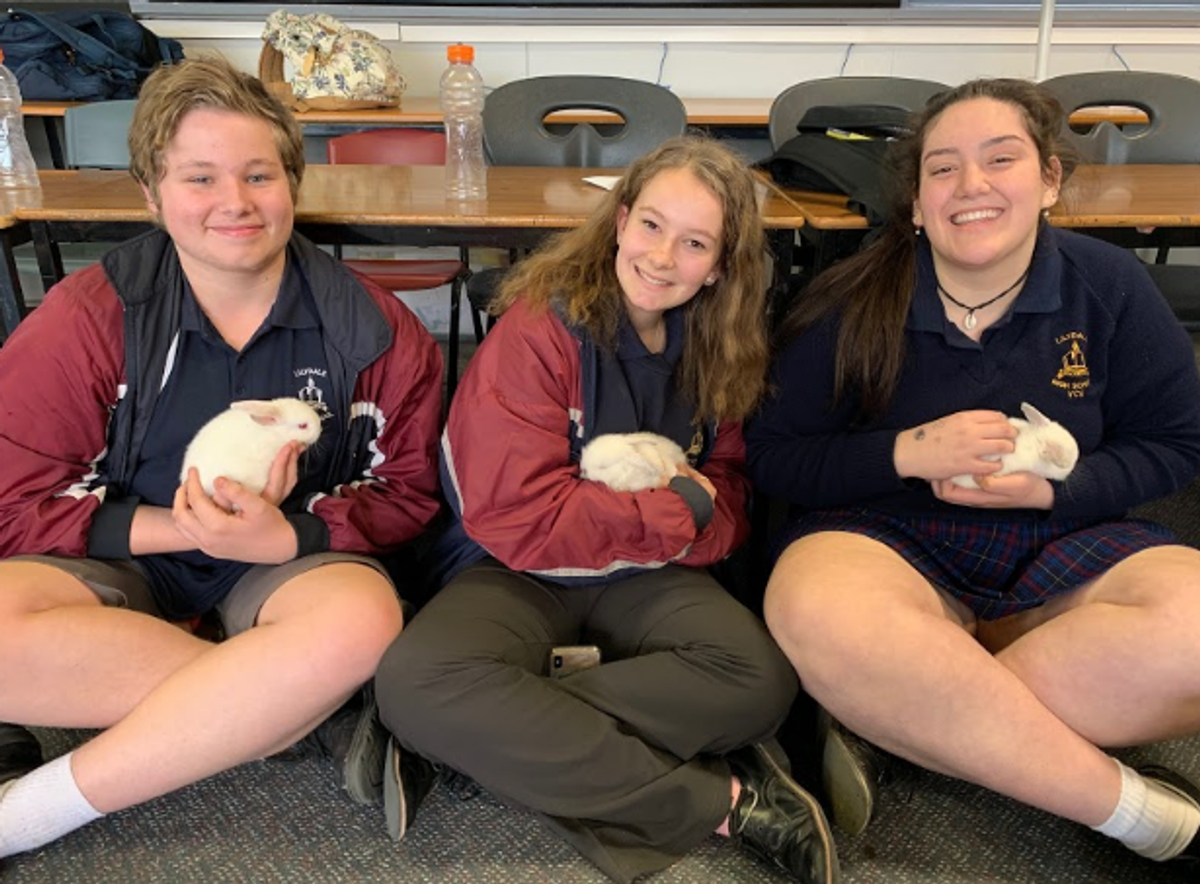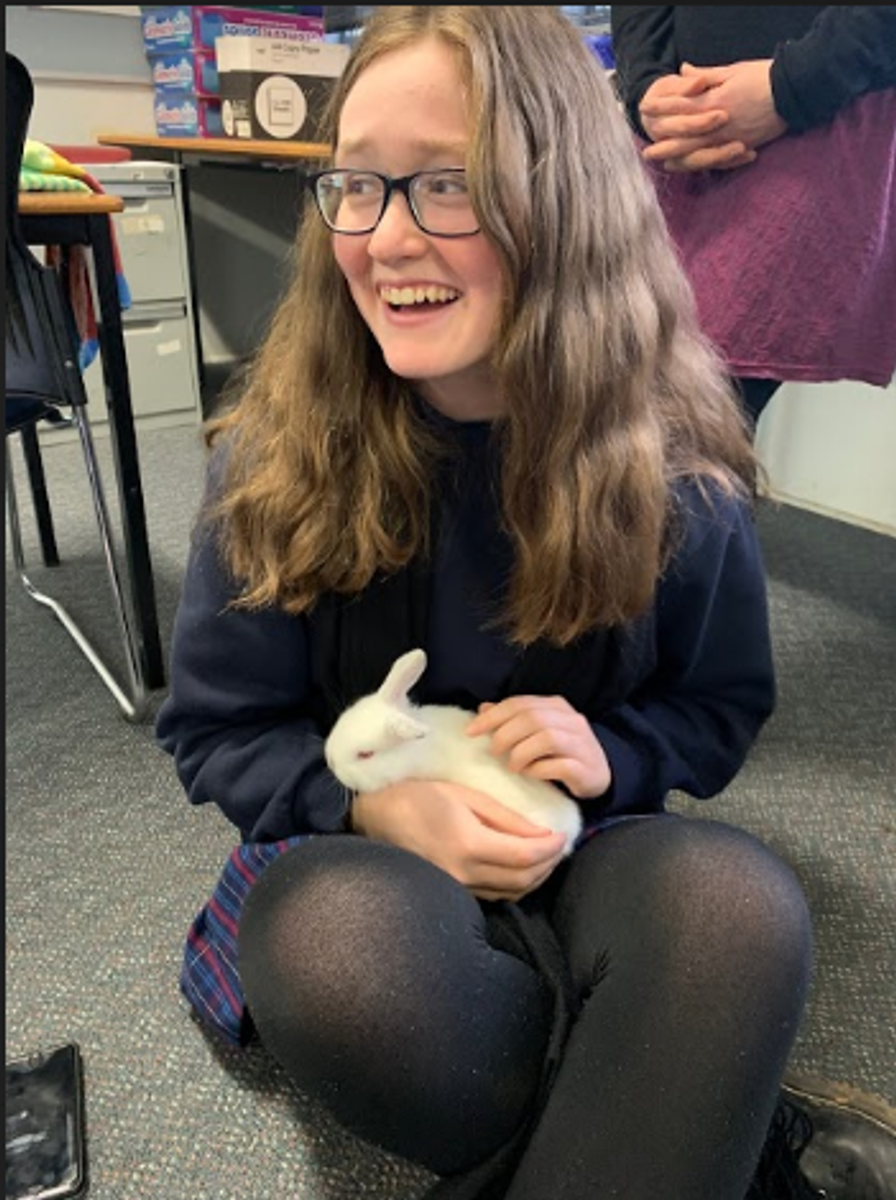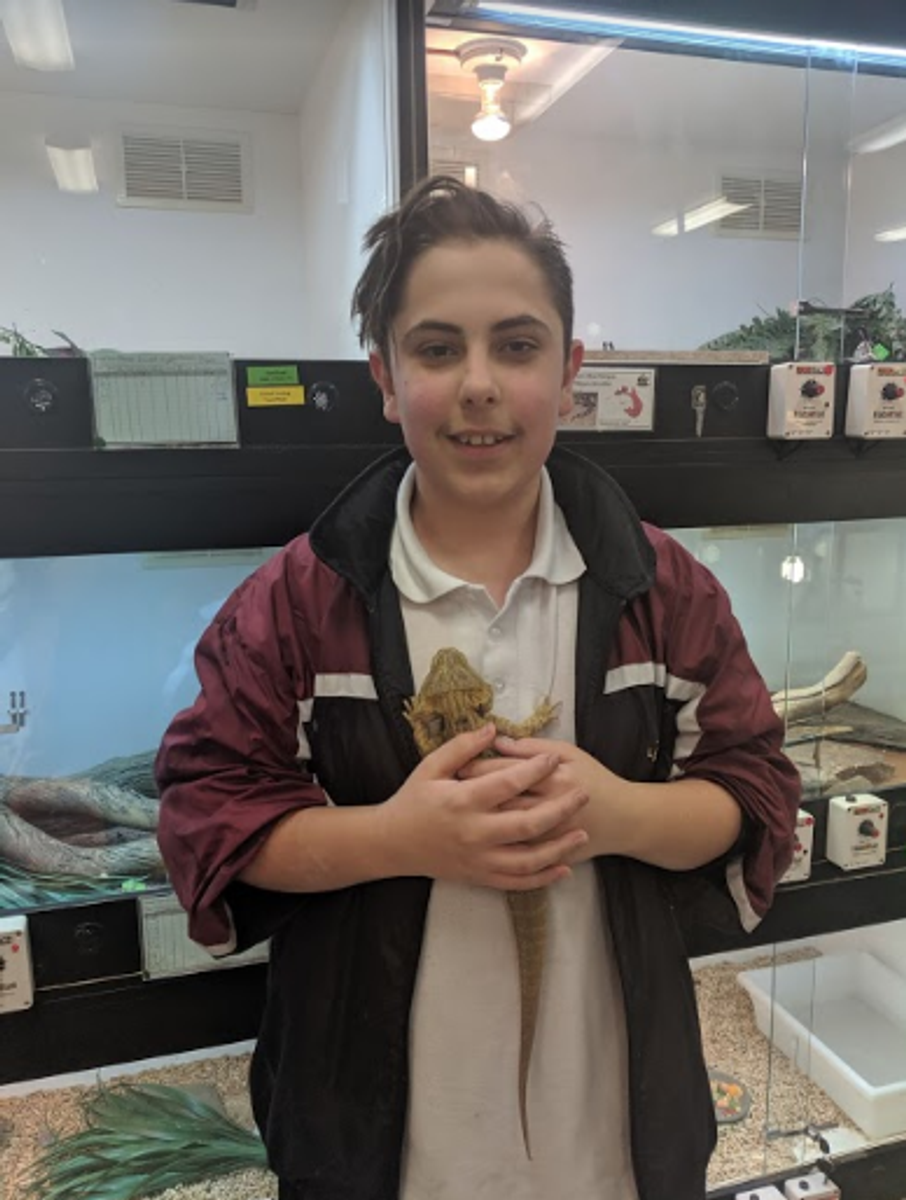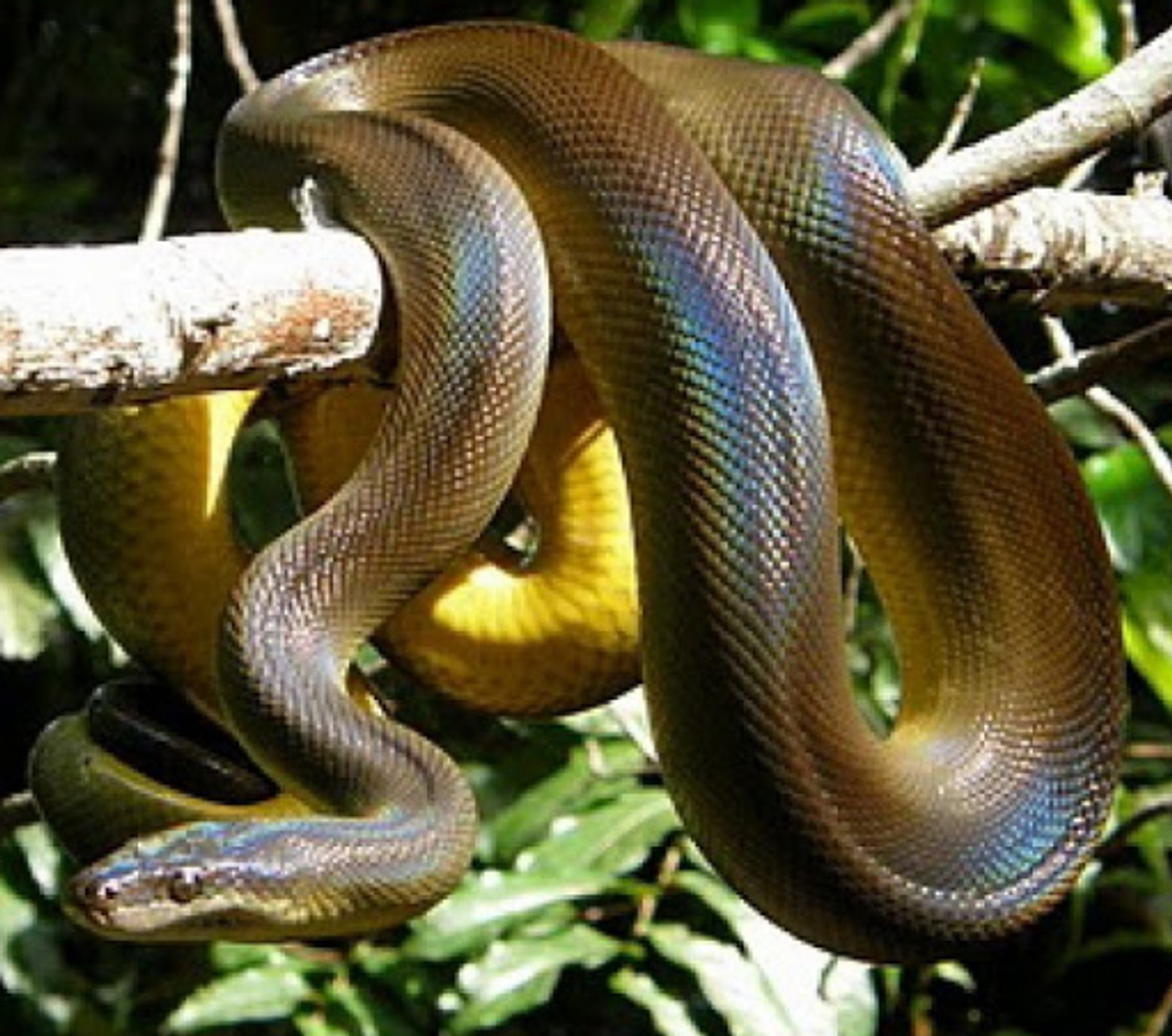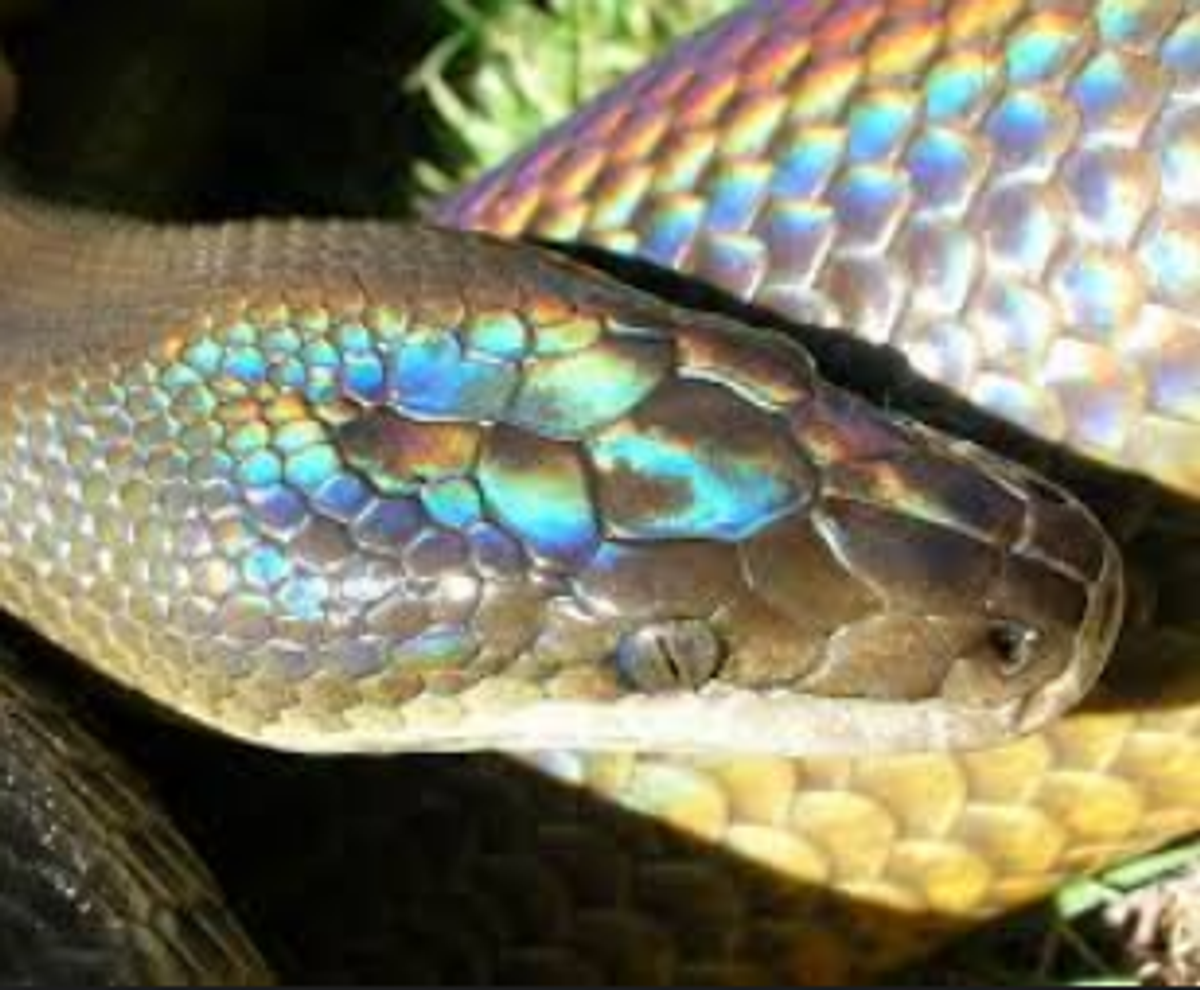REPTILE HOUSE
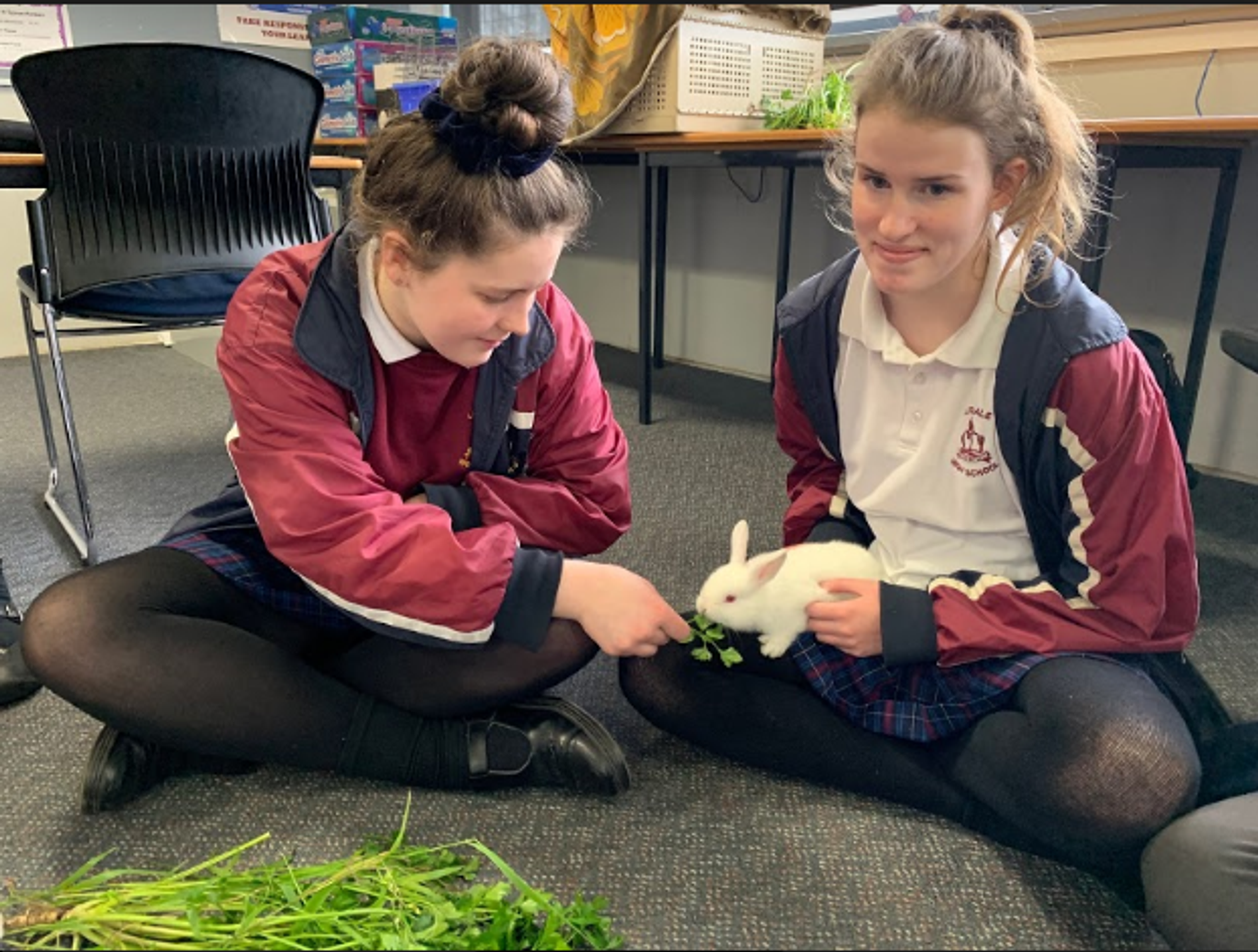
The Big Move and Bunnies
With the NEW Zoology Centre scheduled to begin later this term, we used the school holidays as an opportune time to move the animals and their enclosures across to the Main Staffroom.
It was a huge effort by the students involved, putting in long hours to move more than 80 enclosures and over 200 animals. They were extremely committed and did an amazing job, setting up all the animals in the new room.
We’re still not completely finished, but with just the water dragons remaining, we’re pretty much done. The animals are settled in to the new location and students are enjoying the new room.
The VET Animal Studies students were visited last week, by Veterinarian Narelle Price, from the Melbourne Rabbit Veterinary Clinic, to talk to the first year students about basic care and handling of rabbits and guinea pigs, and first aid in rabbits and other animals, with the second
year students.
Much to the students delight, Narelle also brought in a few bunnies, including some three week old kits, which all the students wanted to take home.
Keeper Profile
Blake Hopgood 9E
Age 14
Team Leader - Room 42 Off Display
How long have you been a keeper in the Reptile House?
I have been a keeper for just over two years.
Which animals do you enjoy working with the most?
I enjoy working with the baby snakes the most, because they’re cute and I enjoy conditioning them and seeing them go from being angry little snakes, that try to bite anything that comes near them, to calm snakes that realise, that they’re not in danger and are happy to be handled.
What has been one of your most memorable moments in the Reptile House?
The most memorable moment was when I first held a snake, because I was terrified of them and
overcame my fear.
What do you enjoy about being a keeper in the Reptile House?
I enjoy working with all the animals and especially working with unique animals such as, the centralian knob tailed geckos, the striped tailed monitors and different blue tongue morphs.
What are your aspirations for the future?
In the future, I would like to work in a zoo with reptiles.
Which animal is your favourite and why?
My favourite animal is Jupiter, the Central Bearded Dragon, because he is the animal that I look after and has cool spikes. I have worked with Jupiter for as long as I’ve been in the room. To take care of him, I need to make sure he has clean fresh water, do regular health checks, clean his cage and check his temperatures and UV, to make sure he has an awesome life.
Central Bearded Dragons come from central parts of Australia, so Jupiter likes a hot basking spot. I feed him regularly with crickets, bugs and a food bowl full of salad and veggies. He is the coolest reptile to work with because he’s really chilled out and has spikes that look really cool.
What is your leadership role in the Reptile House?
My leadership role is to look after the animals that are kept in Room 42. Room 42, is one of our off-display rooms where we keep young animals and animals that recently joined the collection.
I am responsible for a small team of people who help me ensure the animals have all that they need and to help me maintain the equipment and organisation of the room.
I enjoy this role because it’s helps me to learn how to take responsibility for a lot of things. It also helps me to learn to help others and gives me opportunities to teach others, with less experience than me.
The most challenging part of the role, is when I’m working in there on my own and there is so much to get done, with very little time to do it in.
I chose to apply for the role, because it helps me to learn to be in charge and take responsibility for a range of things.
With the NEW Zoology building being built over the coming year, what are you looking forward to the most when we moving into that building?
I’m looking forward to the crocodiles coming to the school, because they are really awesome animals to watch and learn about.
Creature Feature 5
Water Python - Liasis Fuscus
Australia has about 20 species of pythons distributed through a variety of habitats, mostly in the hot, tropical northern areas. Most of these species are either terrestrial or arboreal with only one that is truly semi-aquatic.
This is the Water Python (Liasis Fuscus), which is found around freshwater swamps, lagoons and along the edge of rivers.
They feed on birds and their eggs, mammals and other reptiles including small crocodiles.
Prey items are generally ambushed and then constricted; a method commonly employed by non-venomous snakes.
Water Pythons are oviparous and lay about 14 soft-shelled eggs and the incubation period is about 60 days.
They can be found in large numbers and are a major predator of the northern floodplains.
The Water Python has an opalescent sheen to its skin and it is thought to be the rainbow serpent, of Indigenous folklore.
Mike Swan
Marcus Whitby

